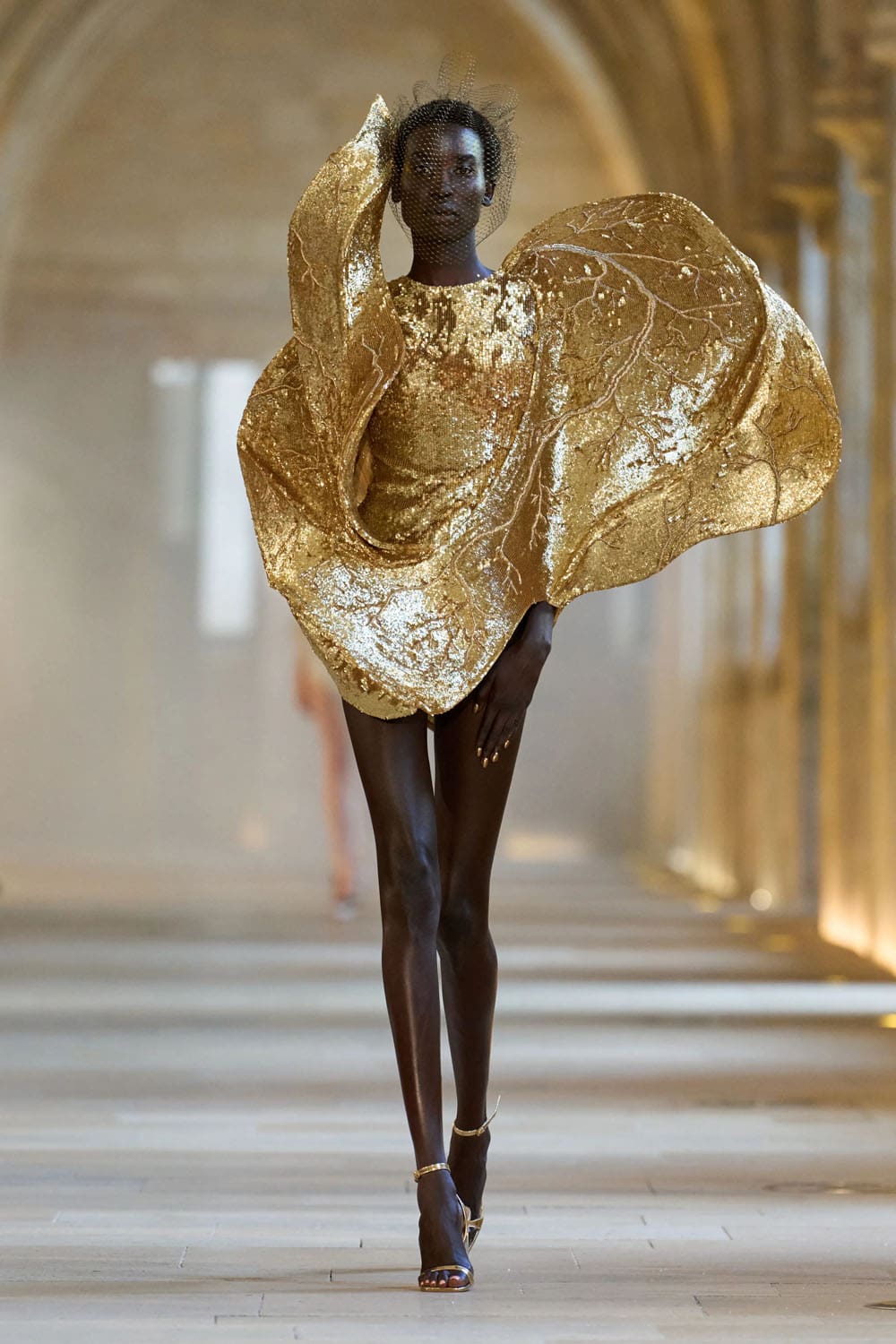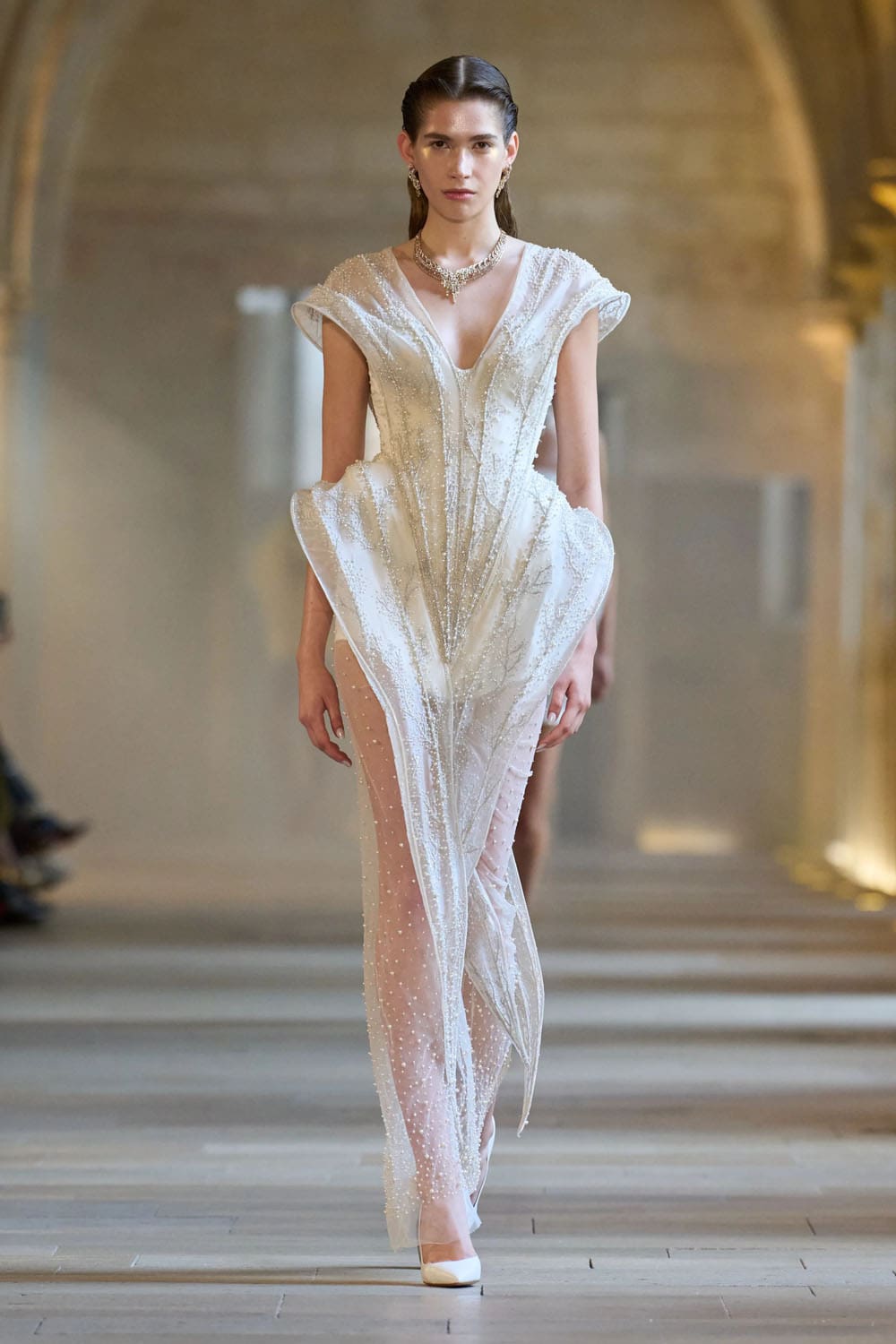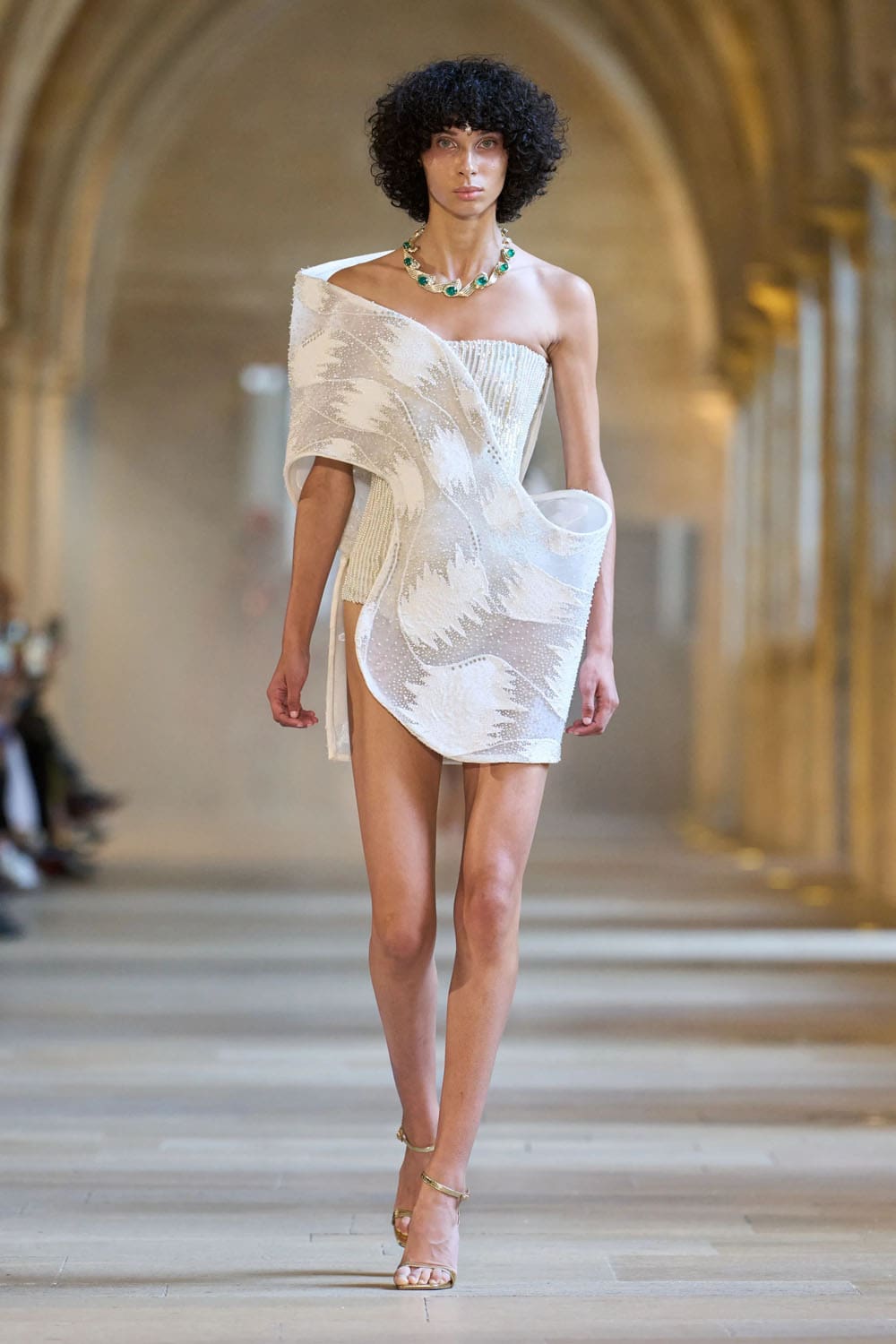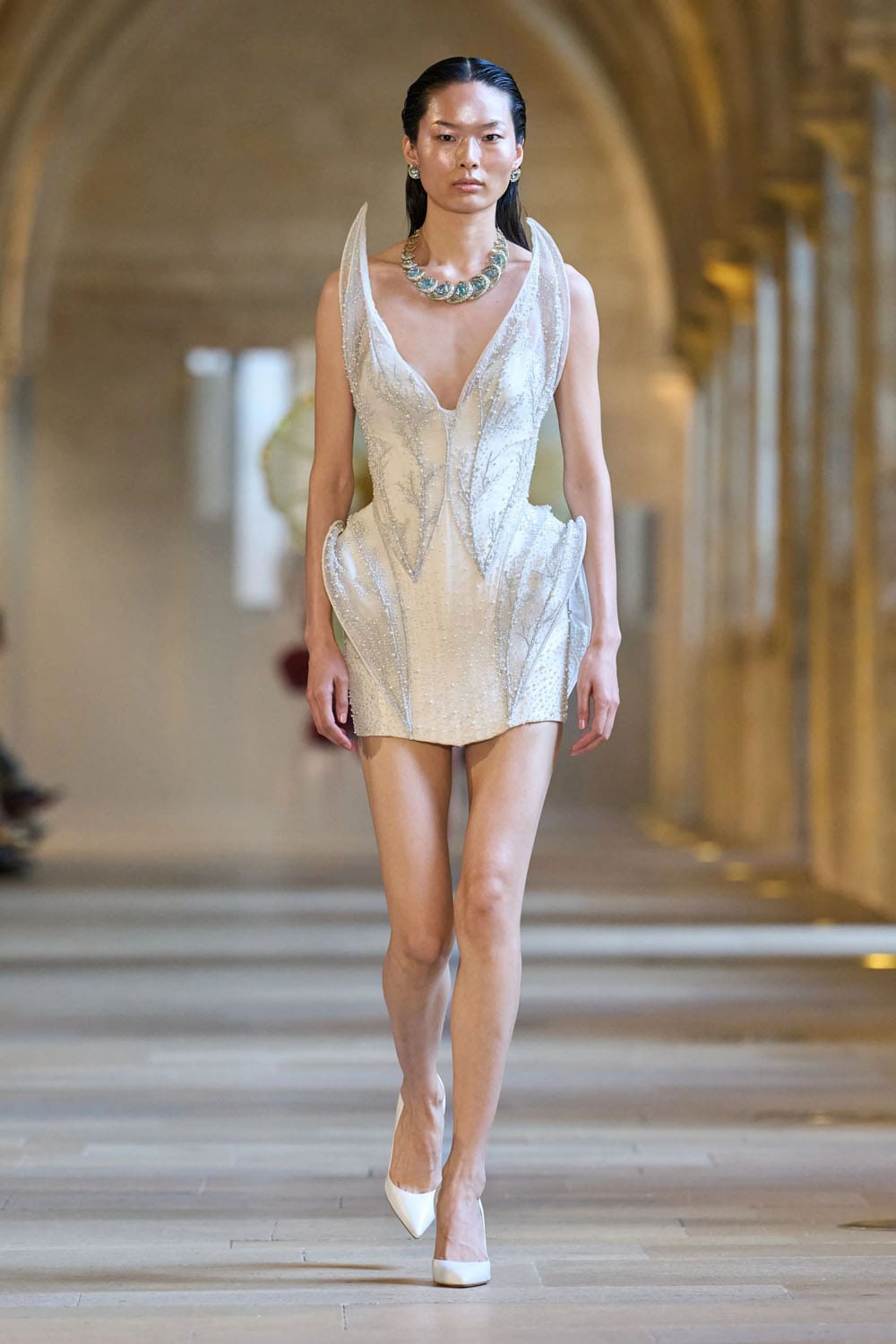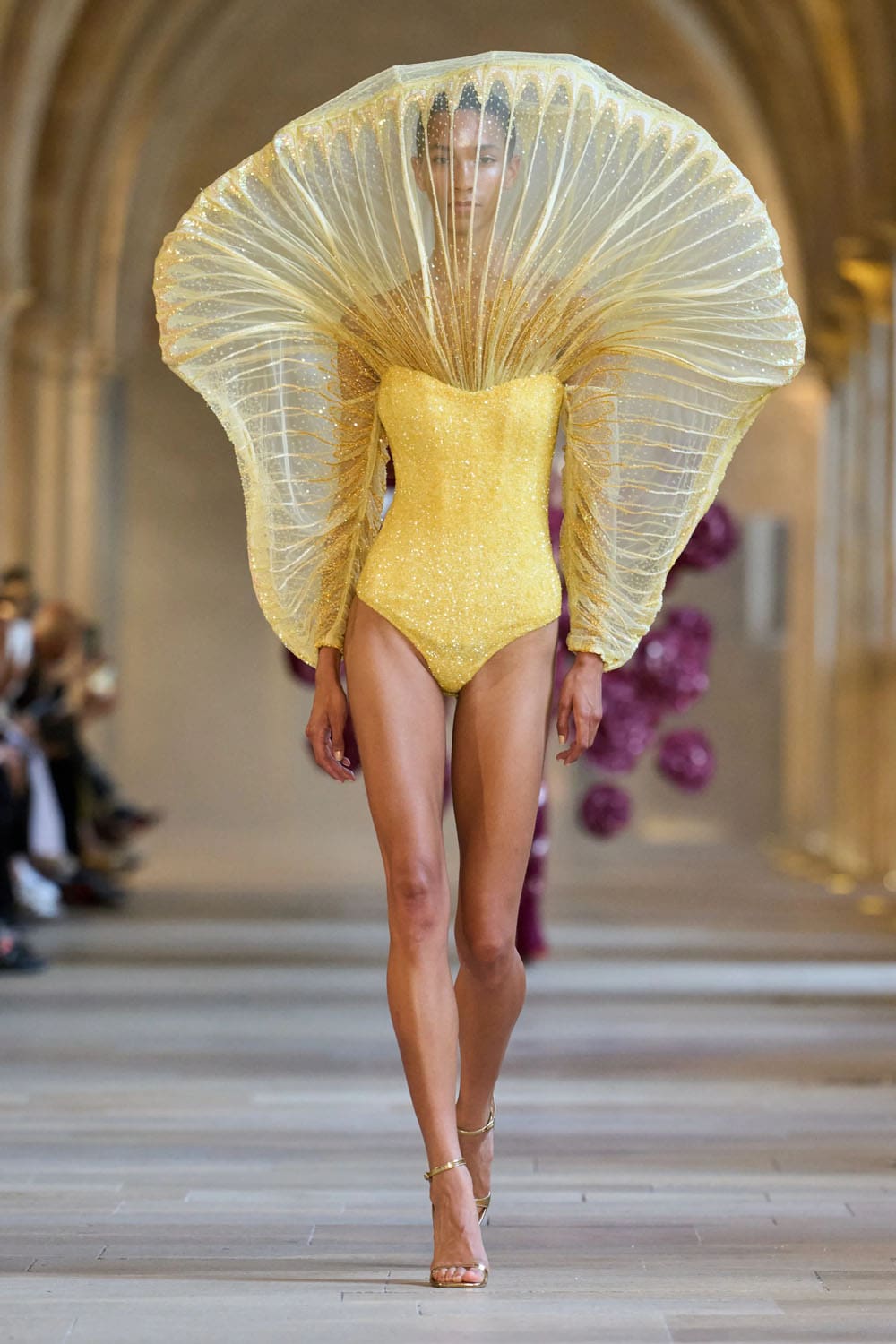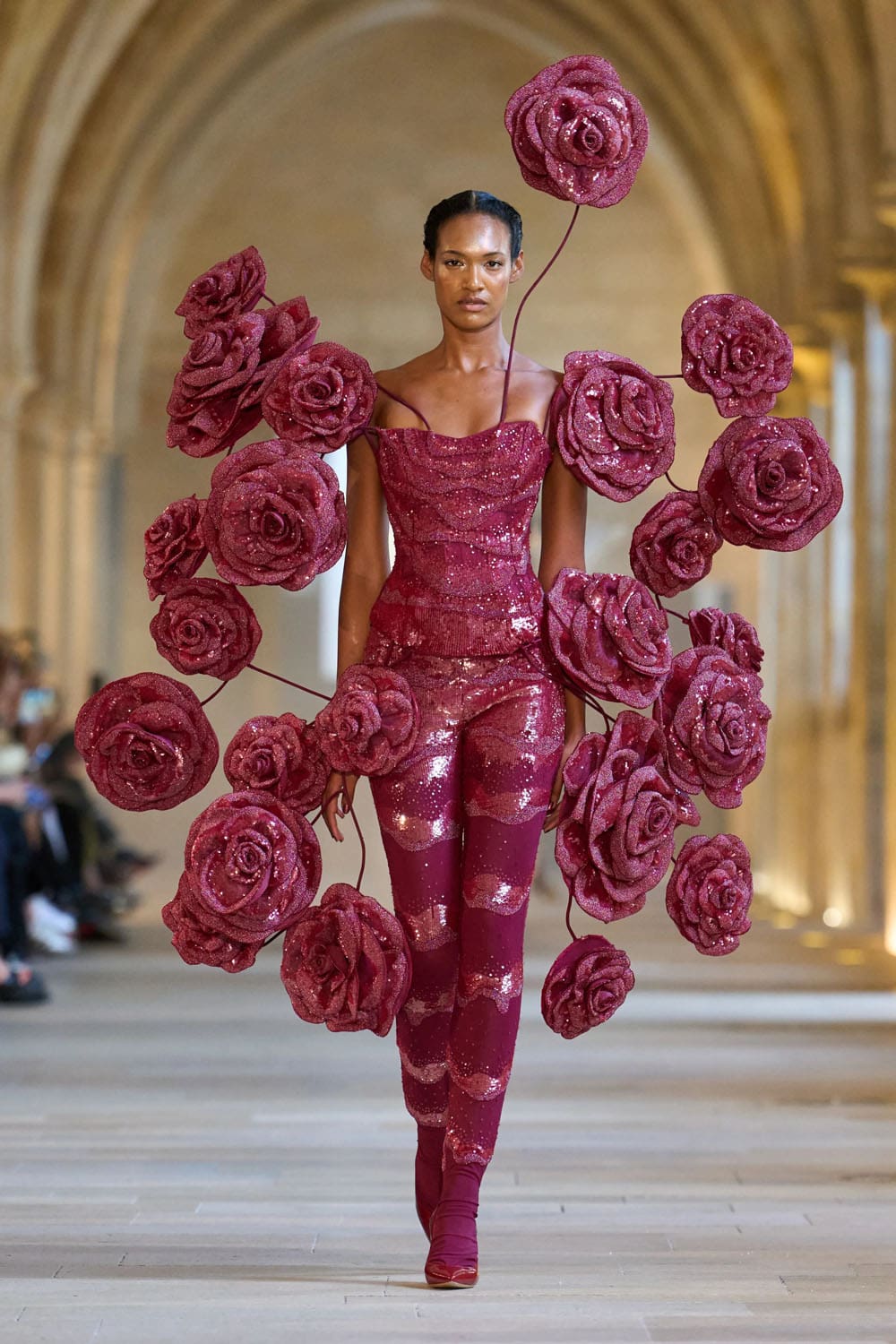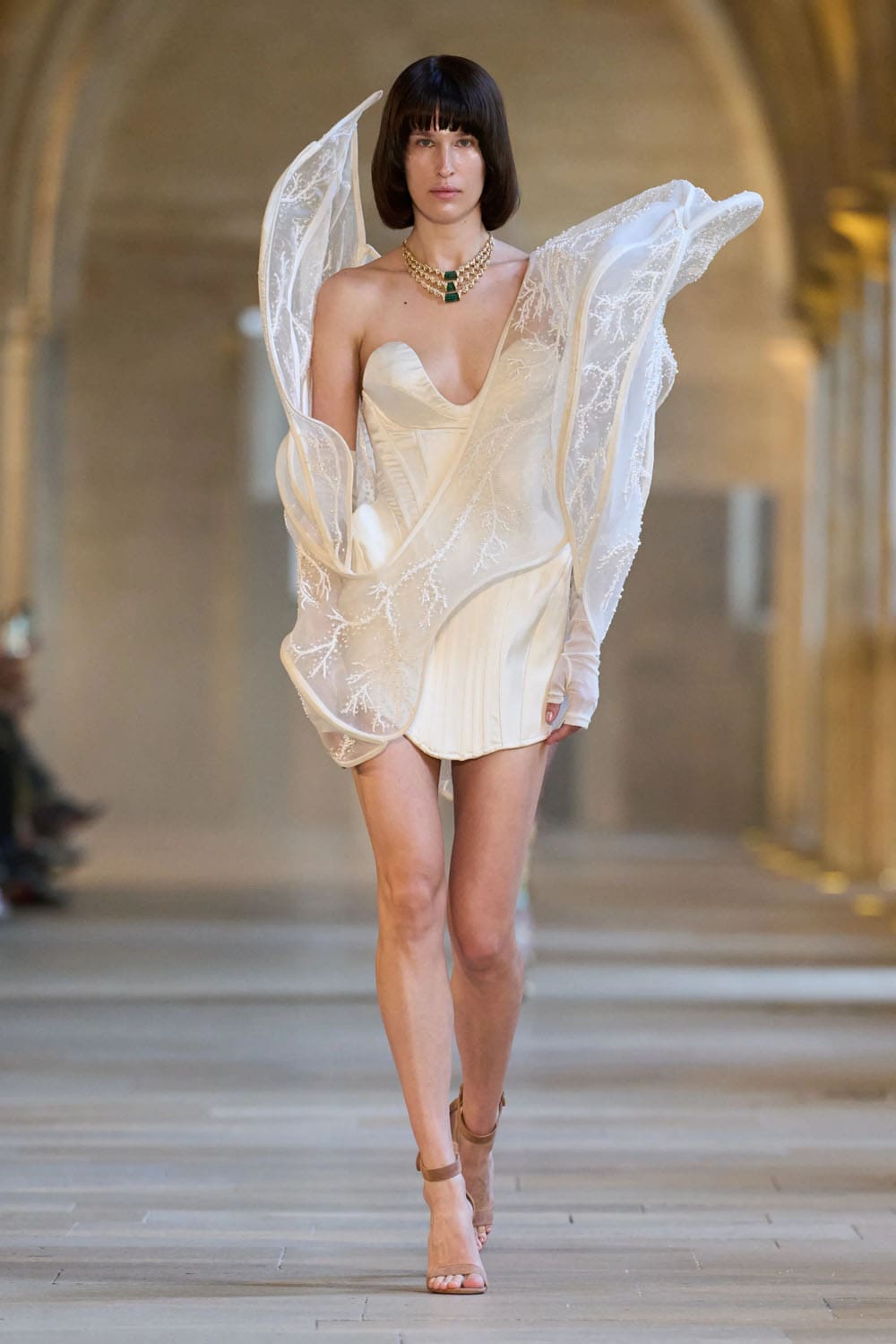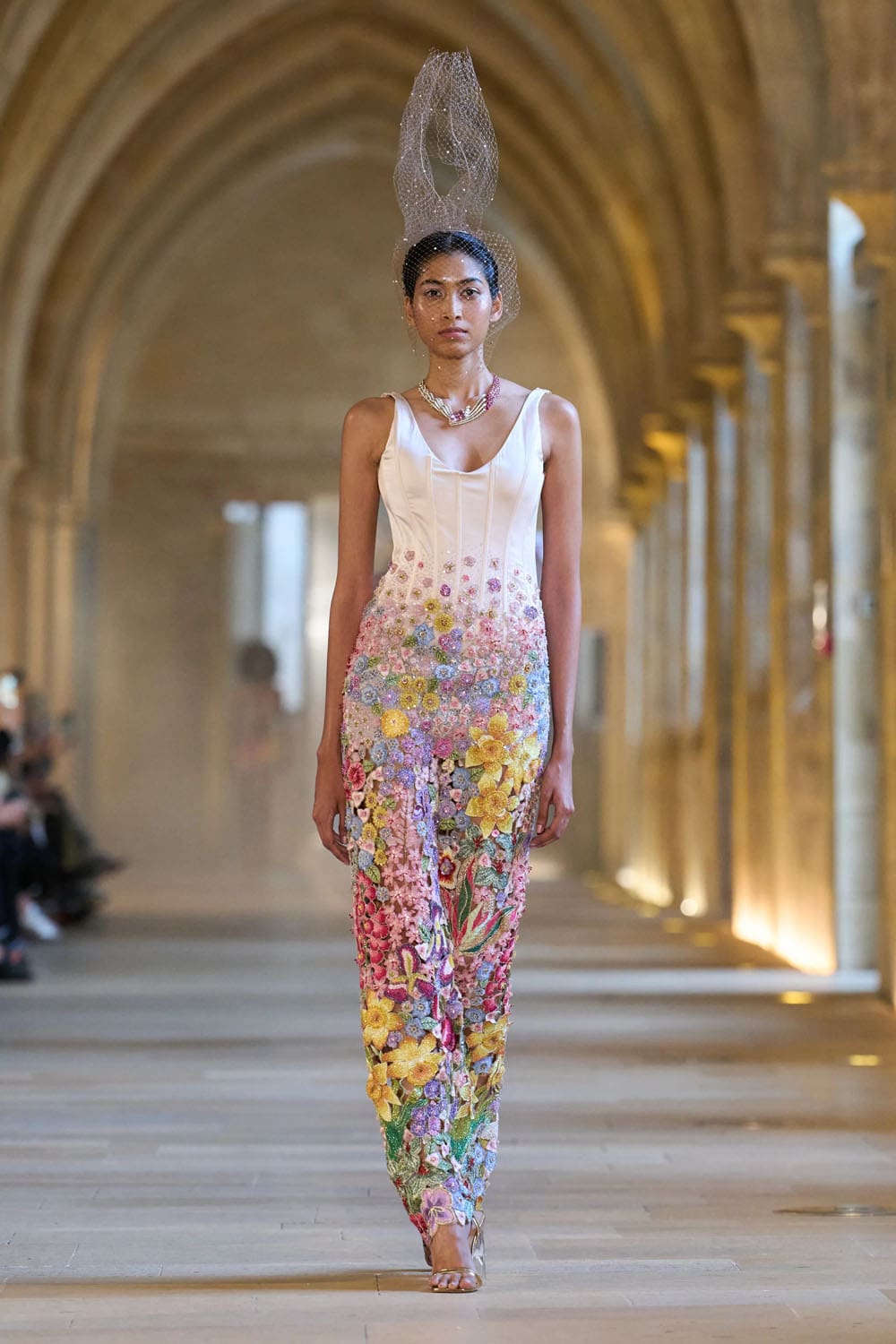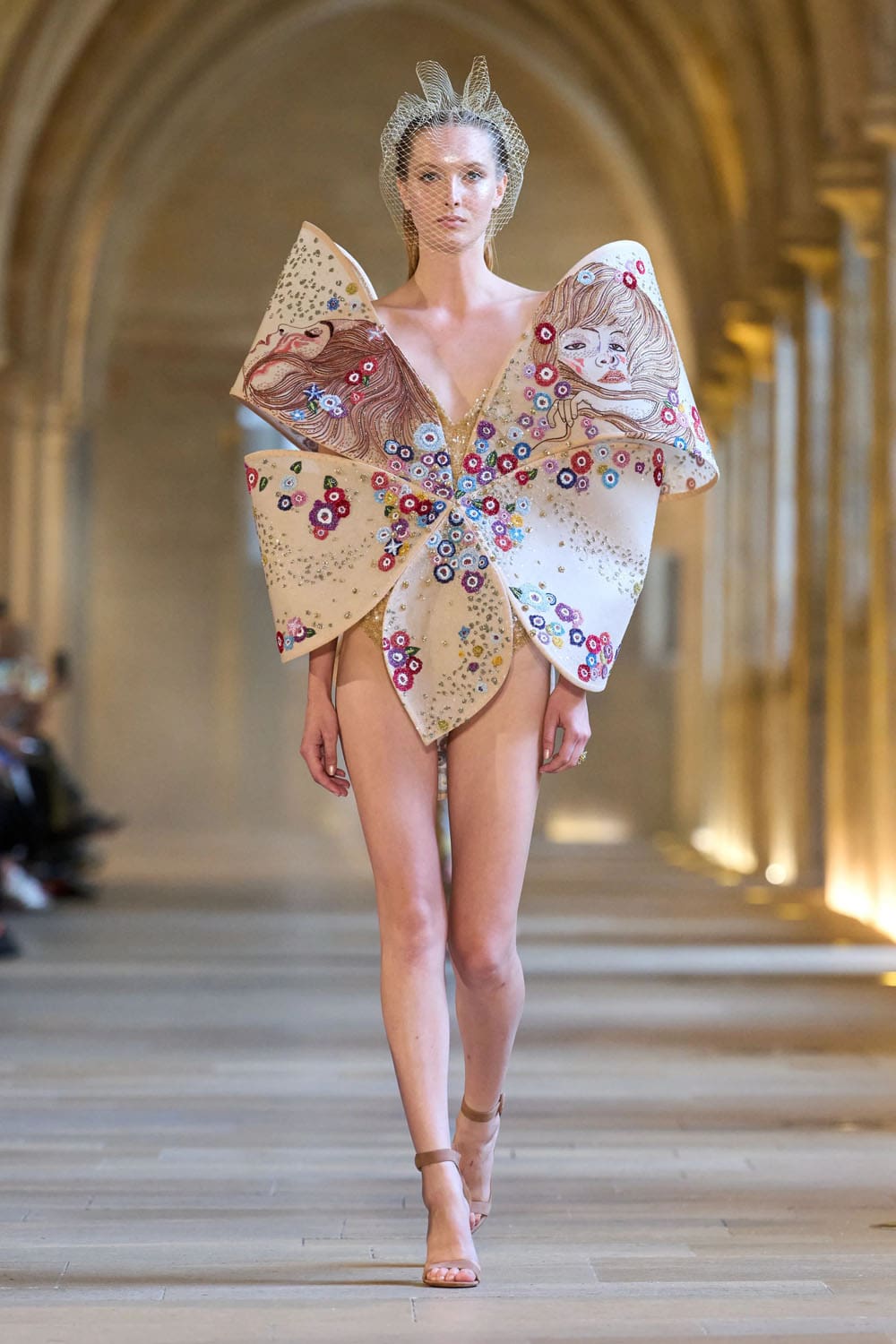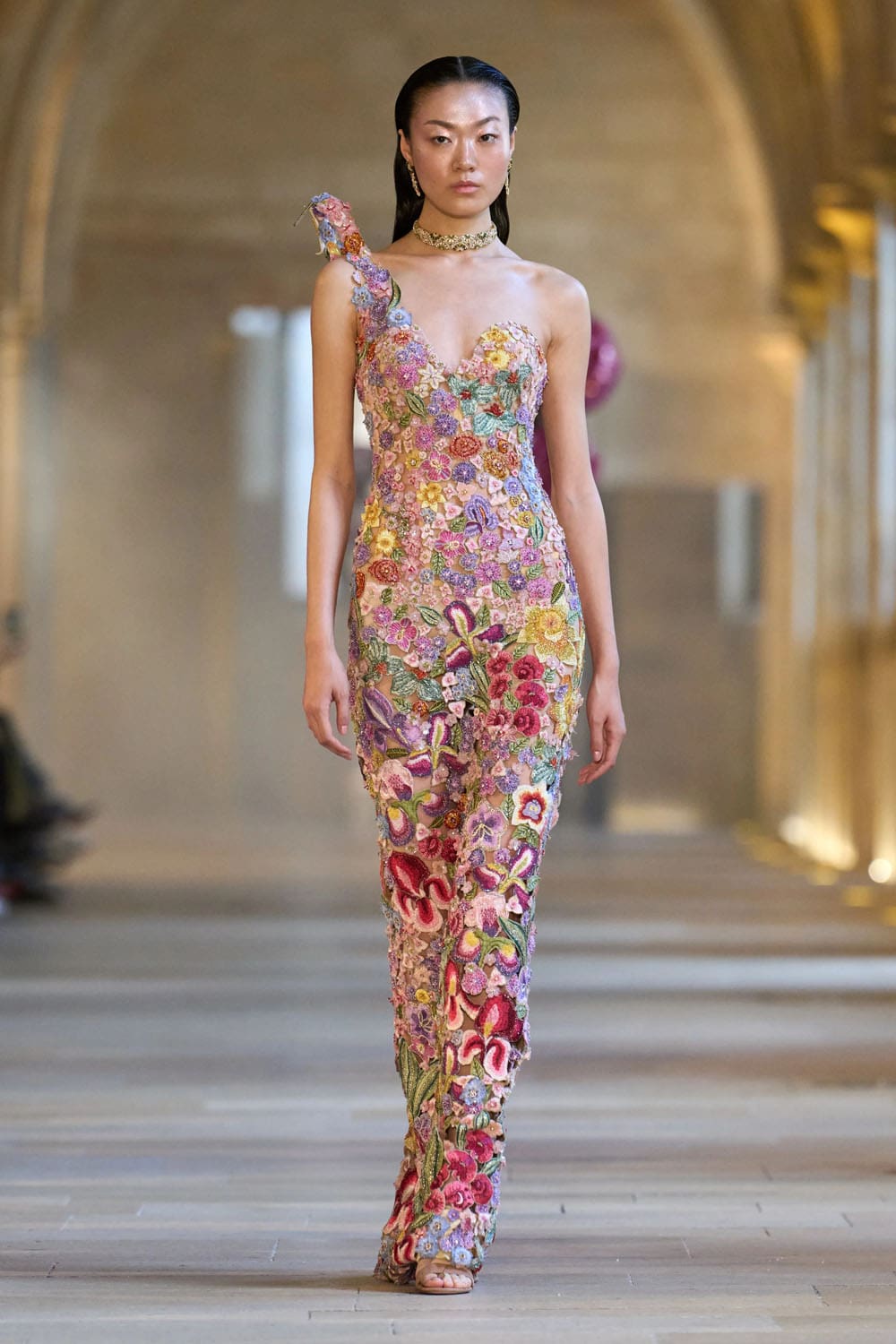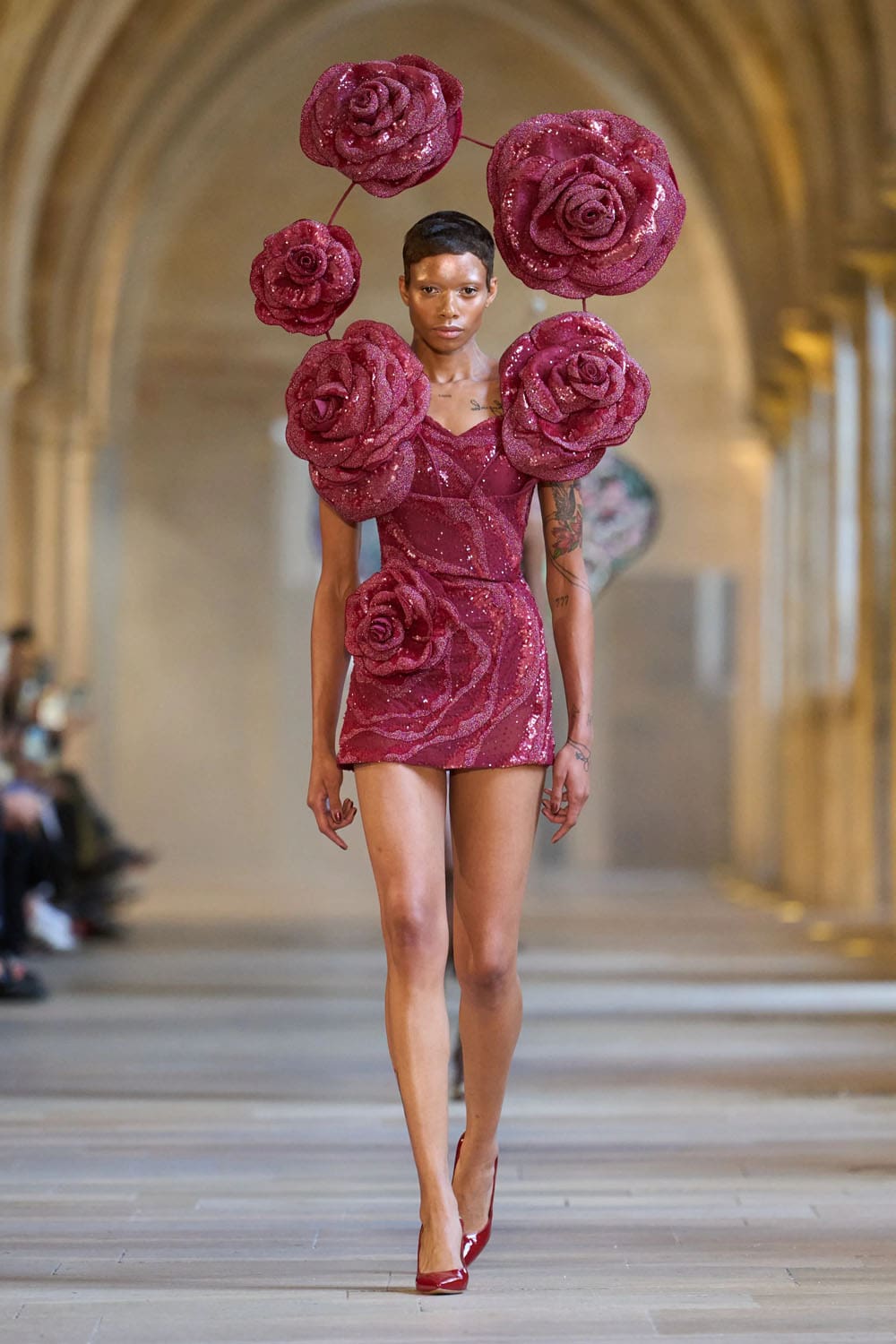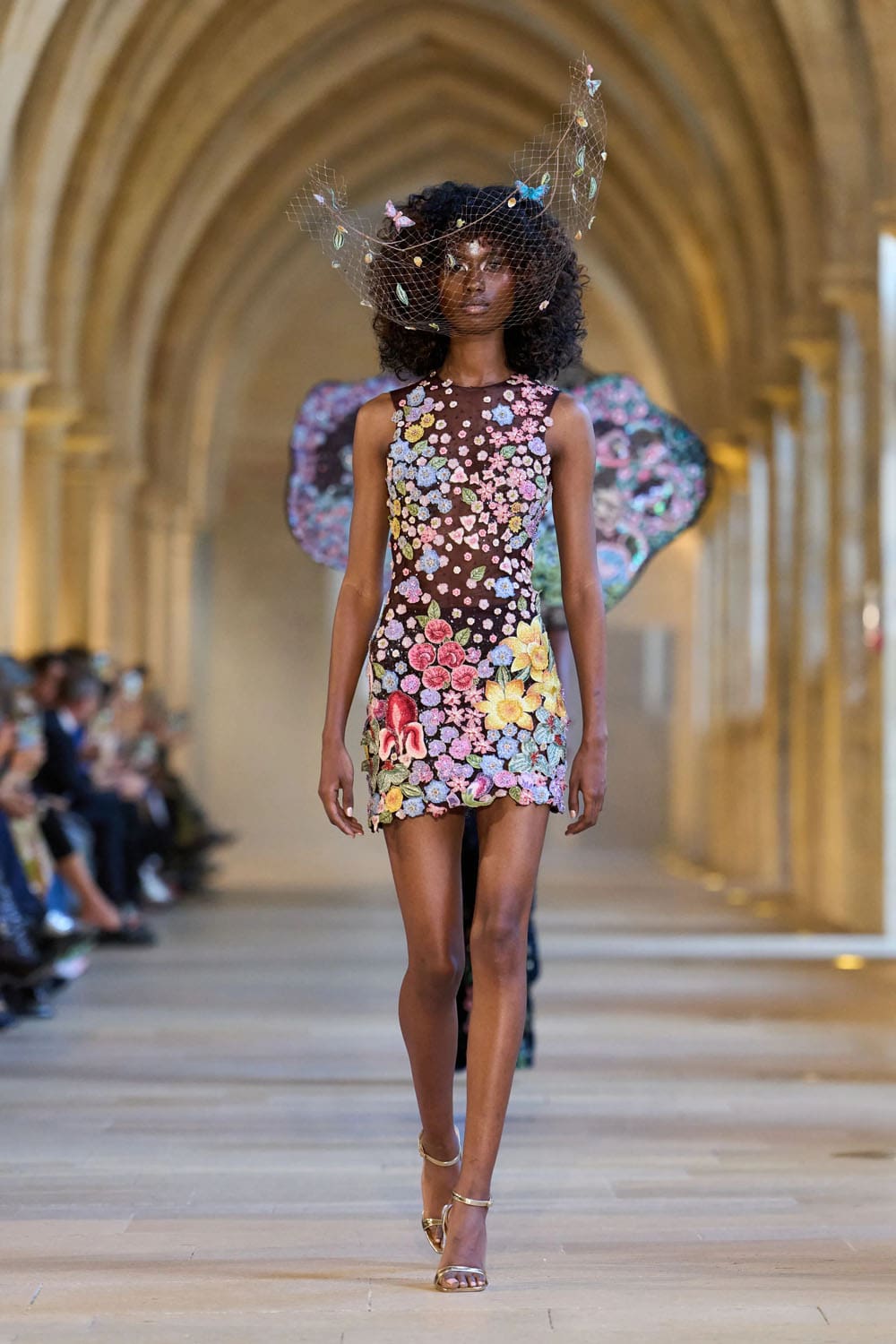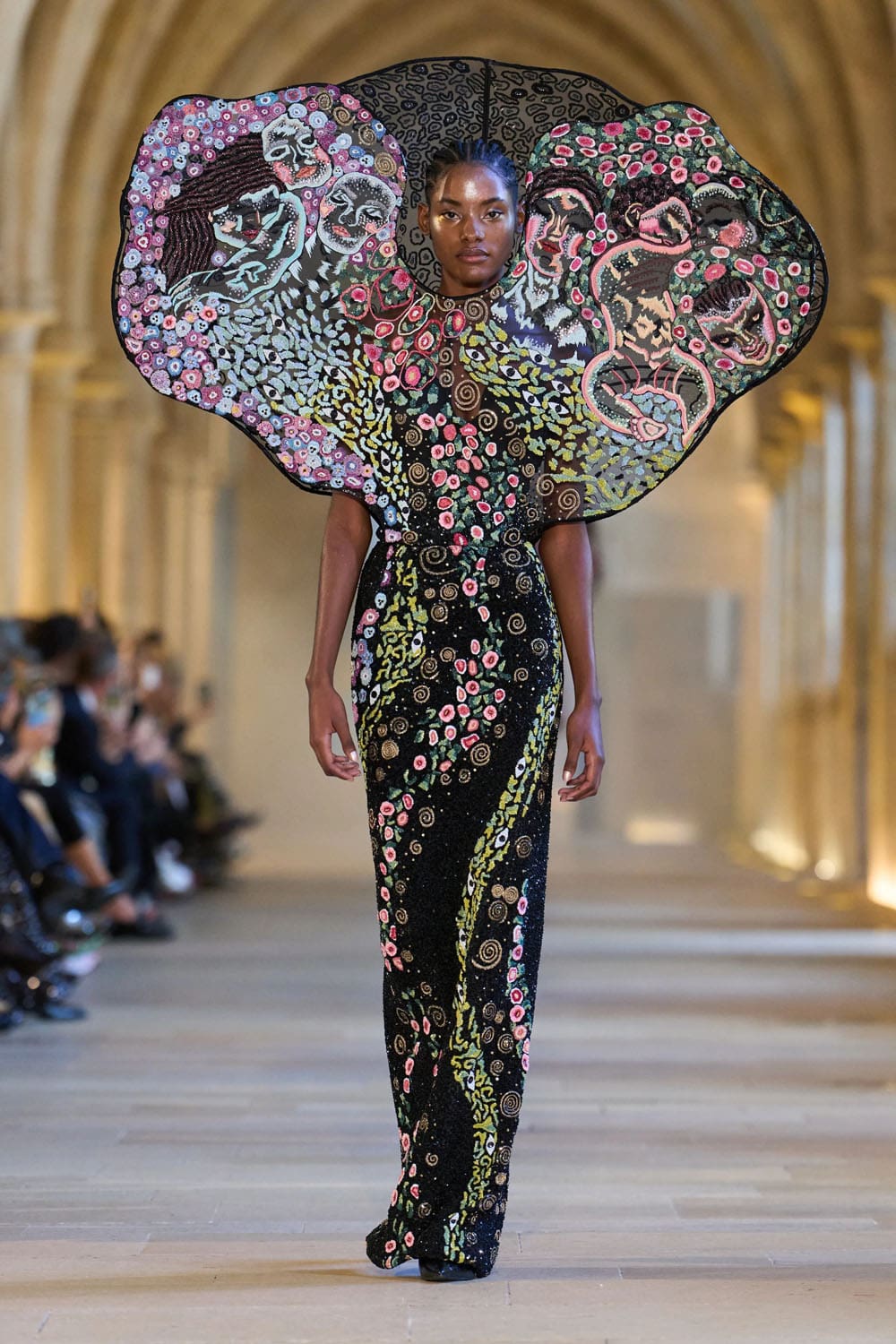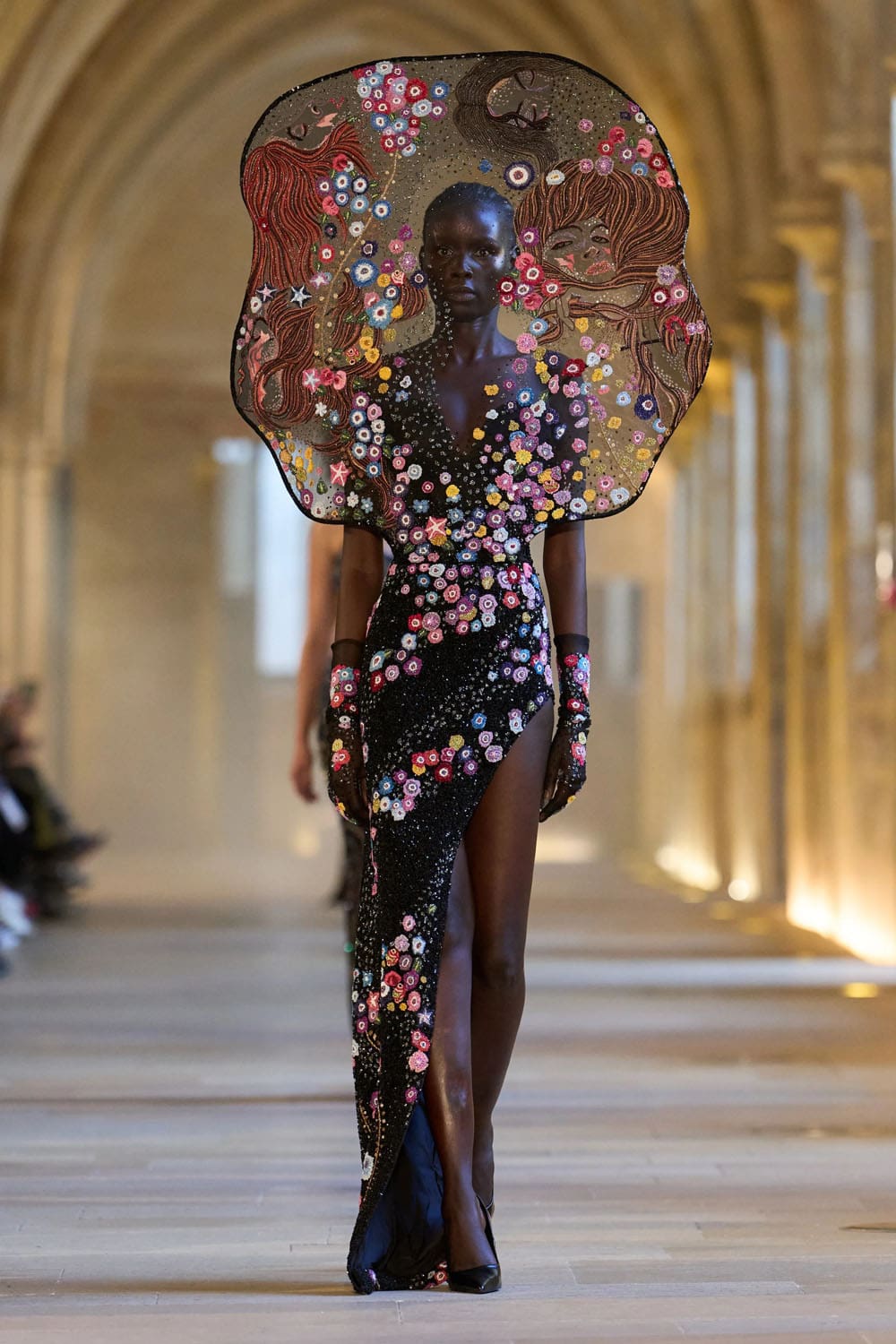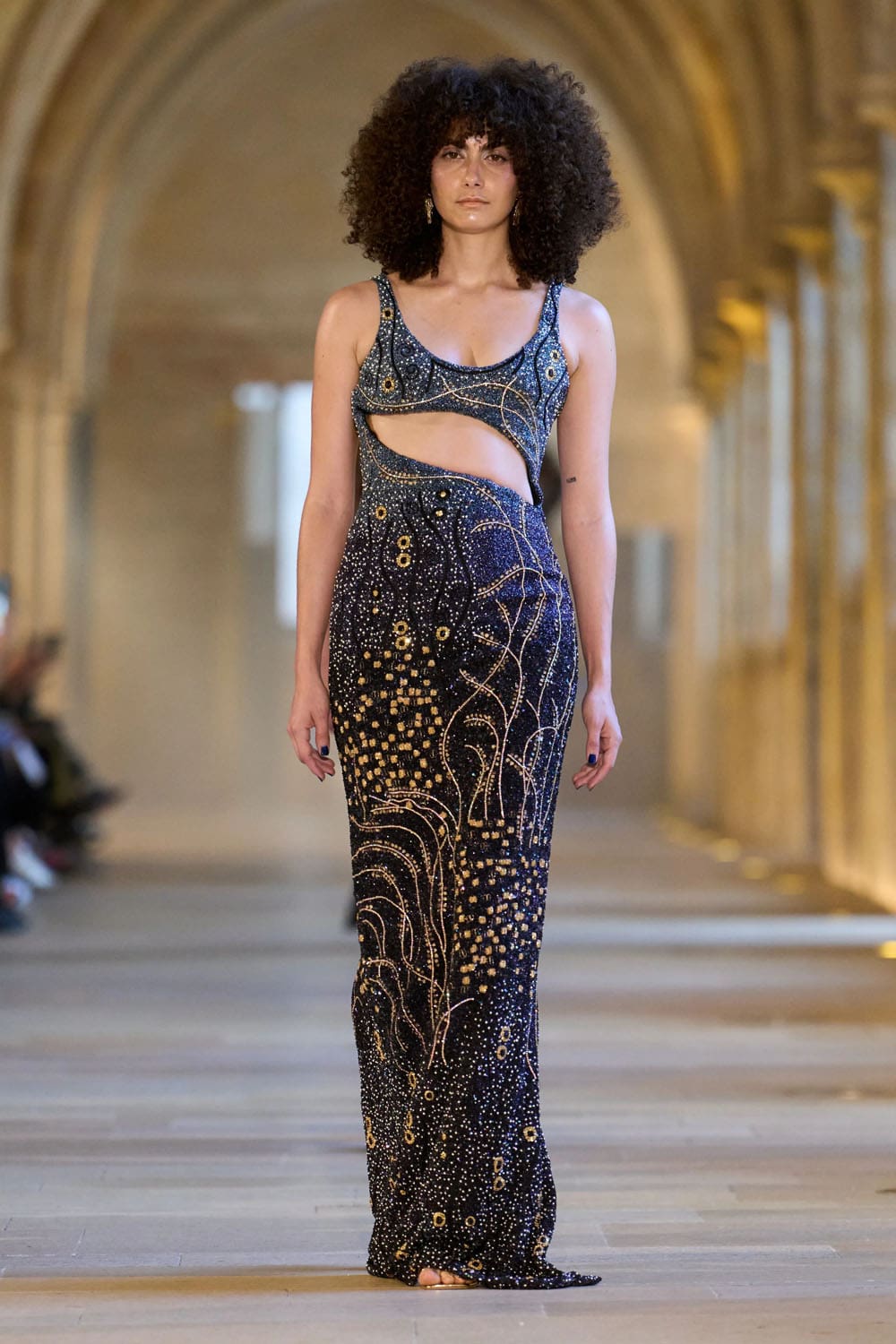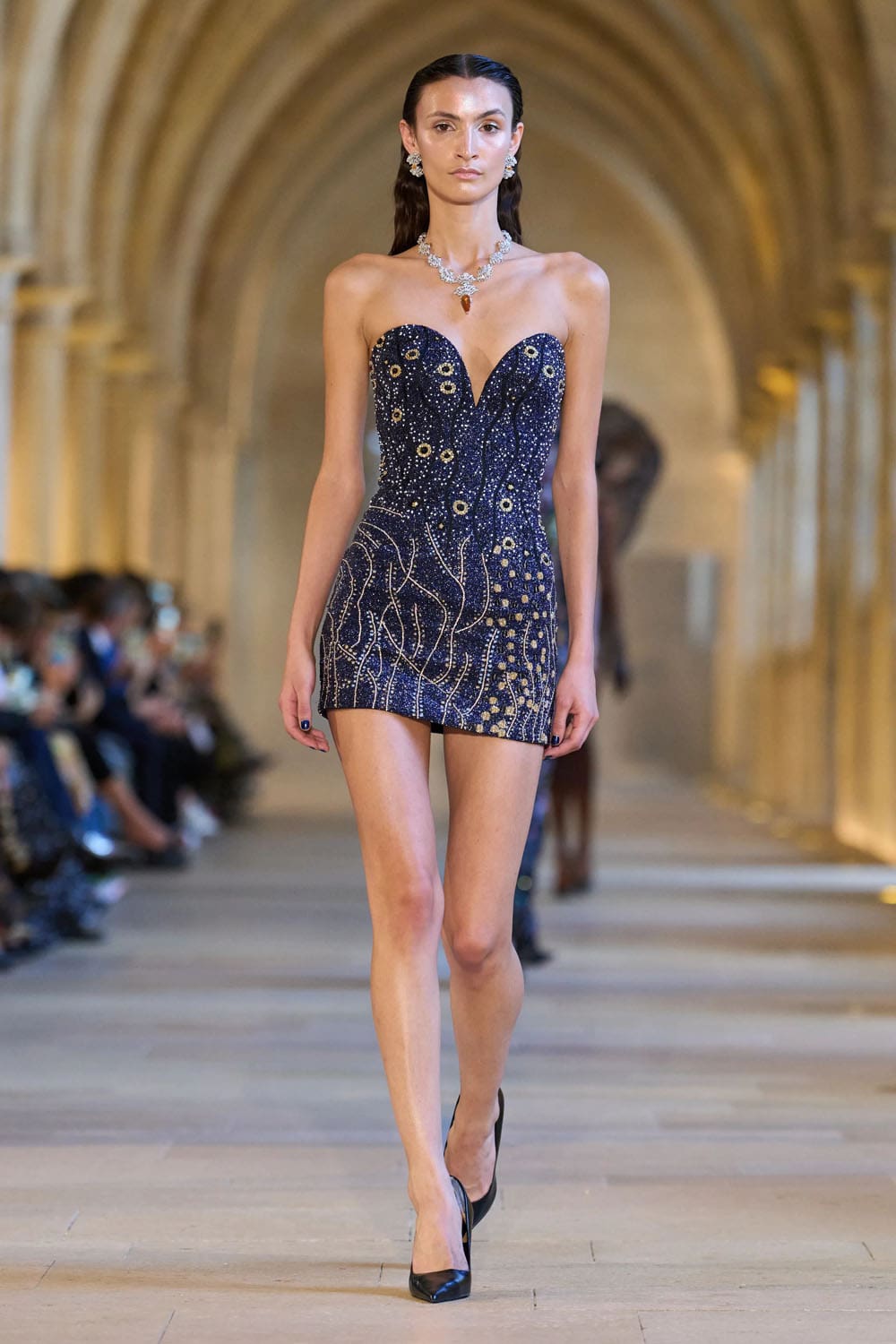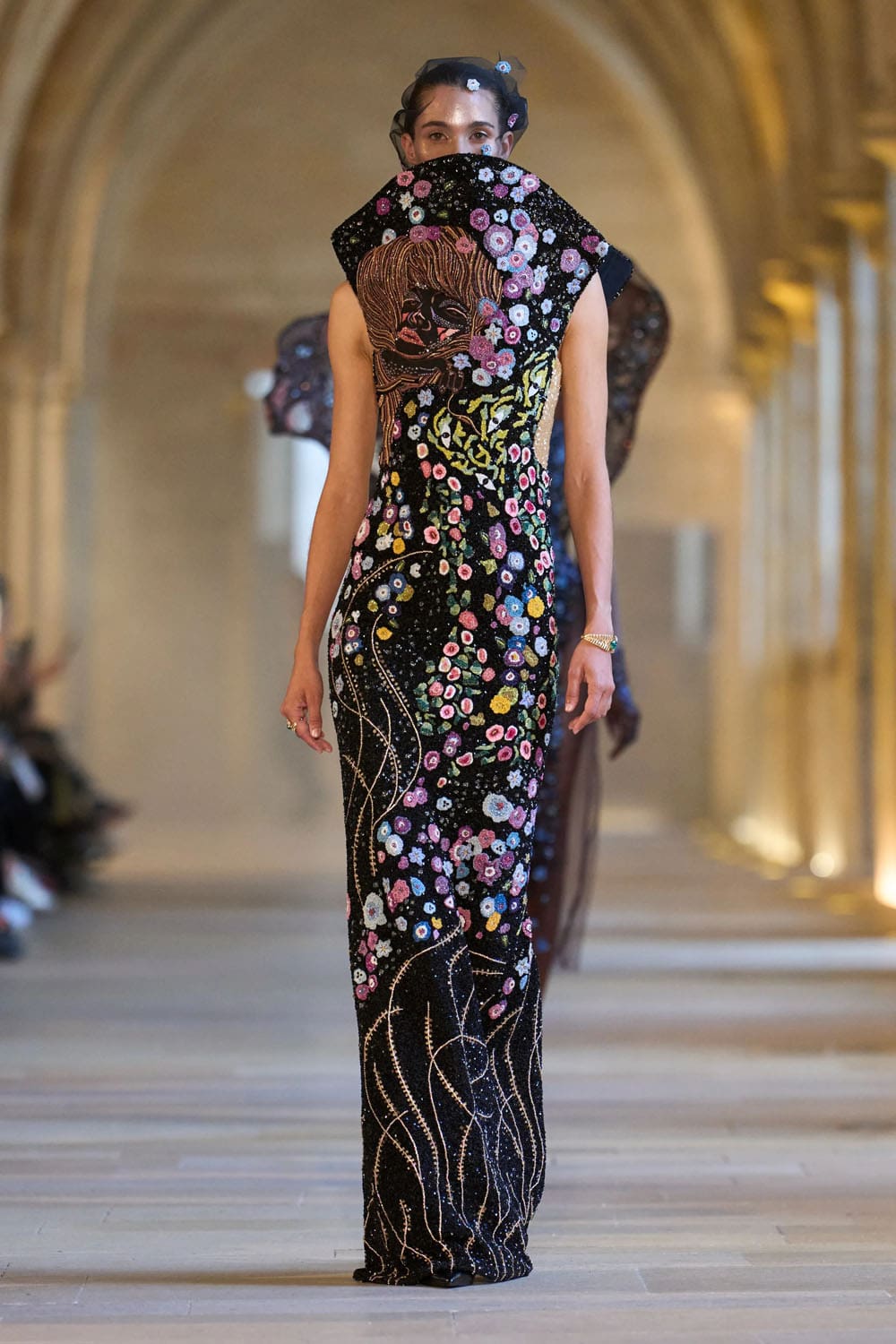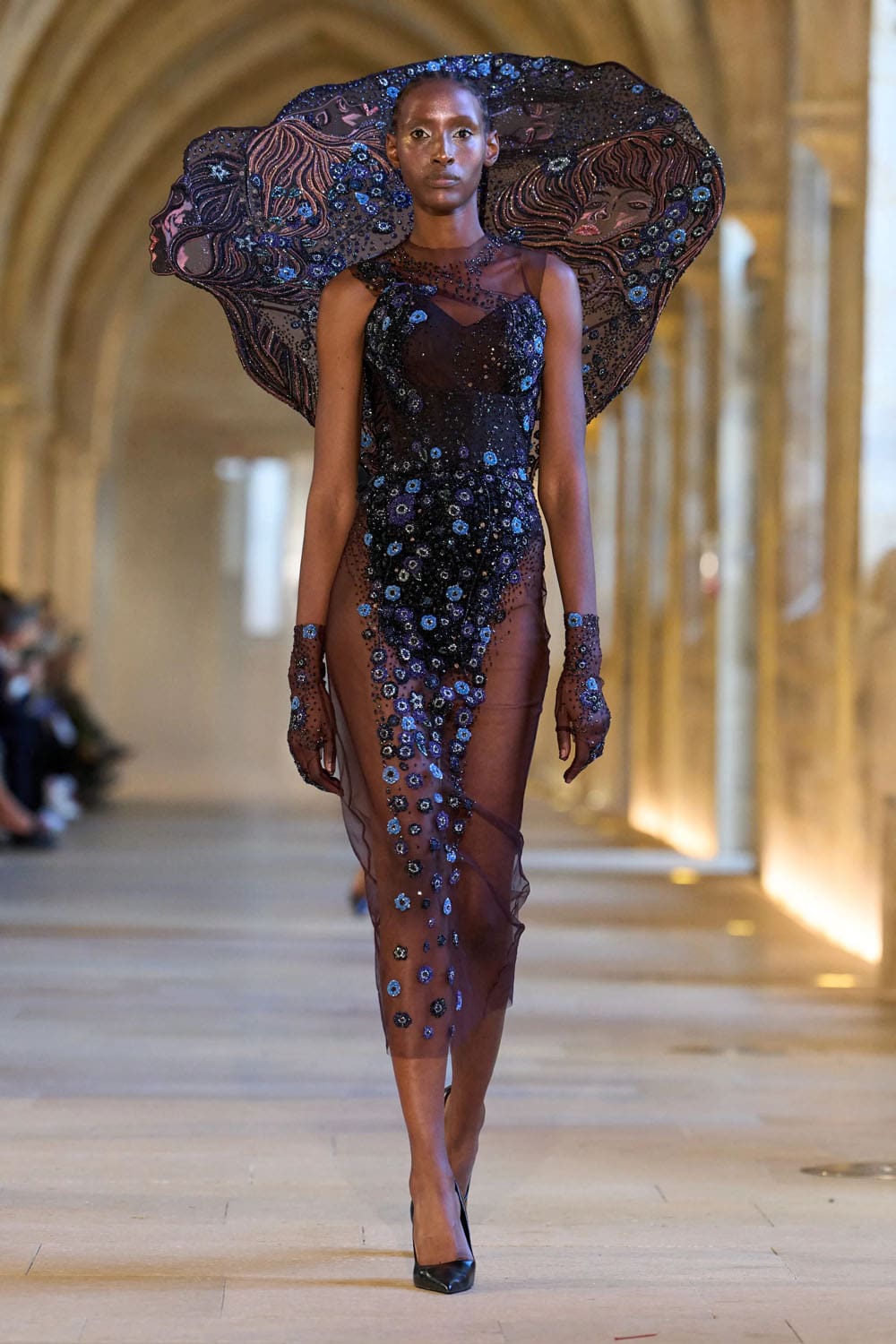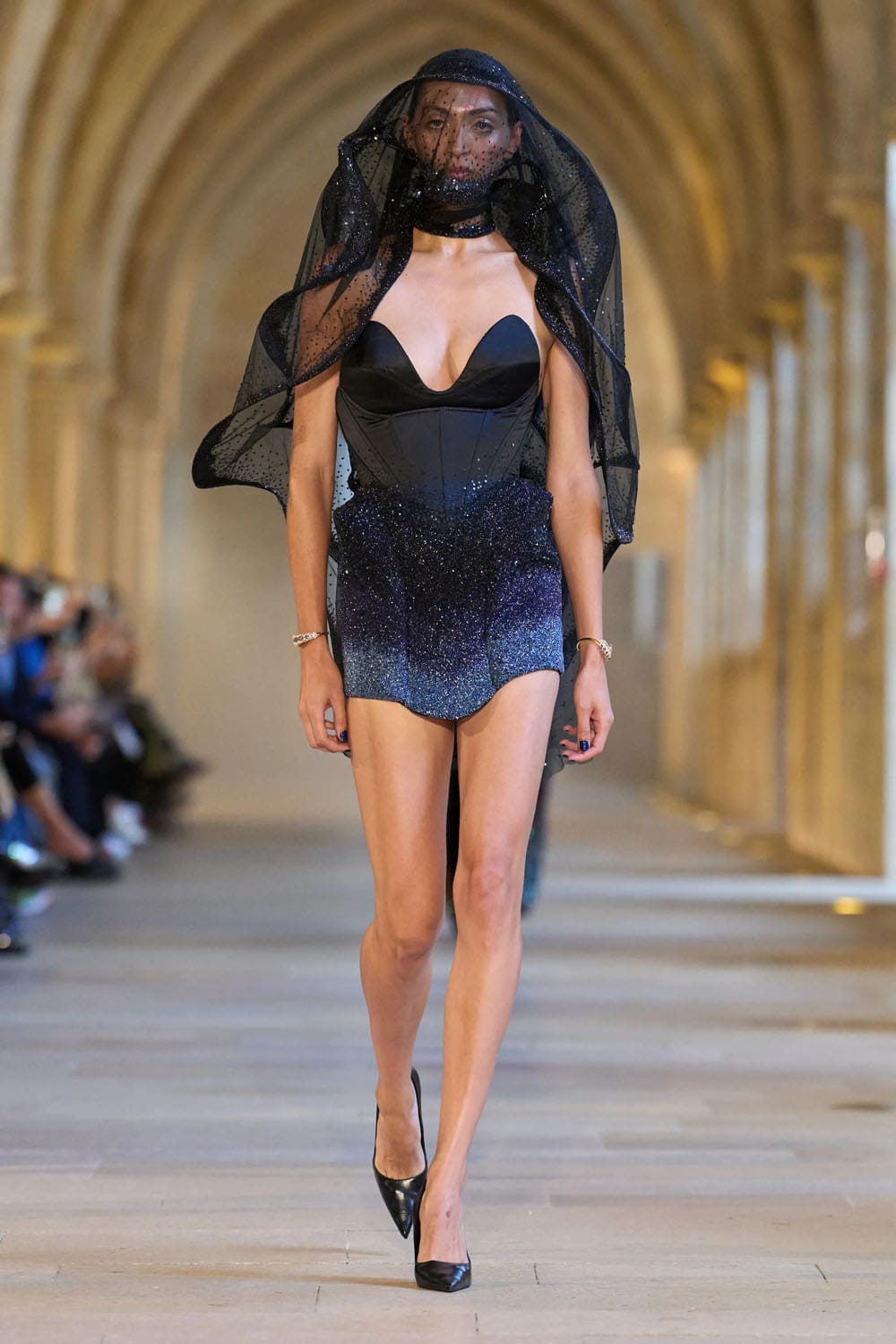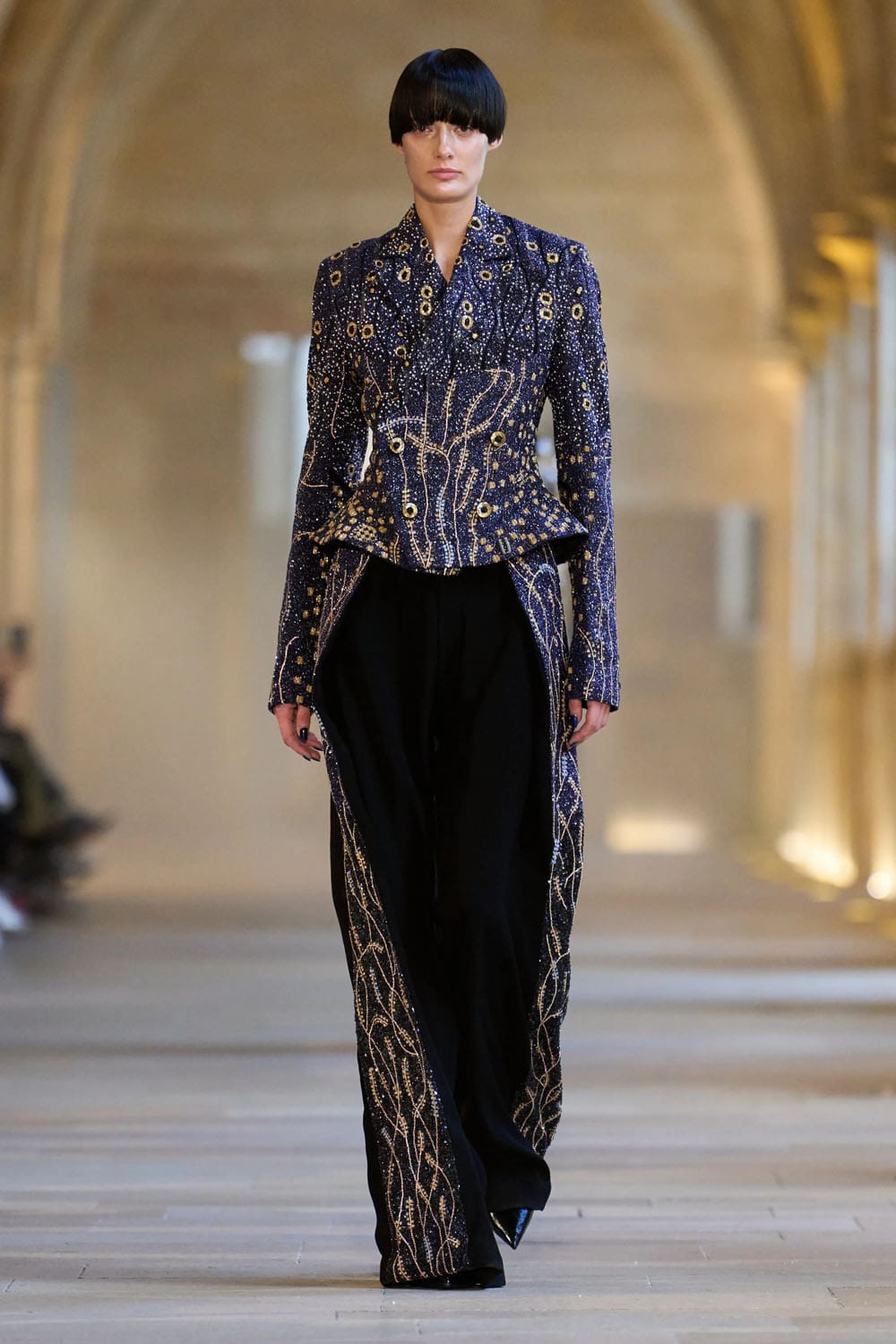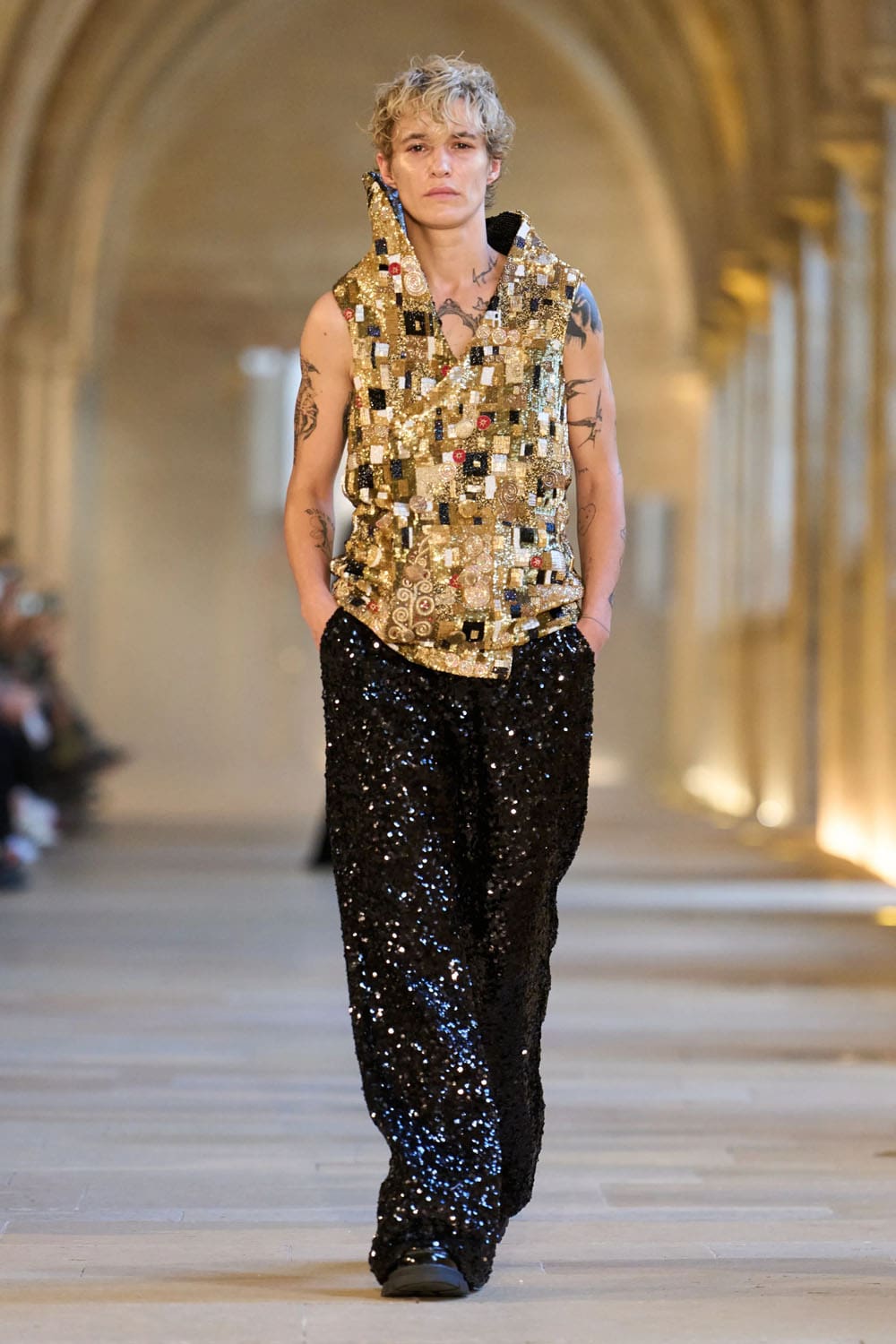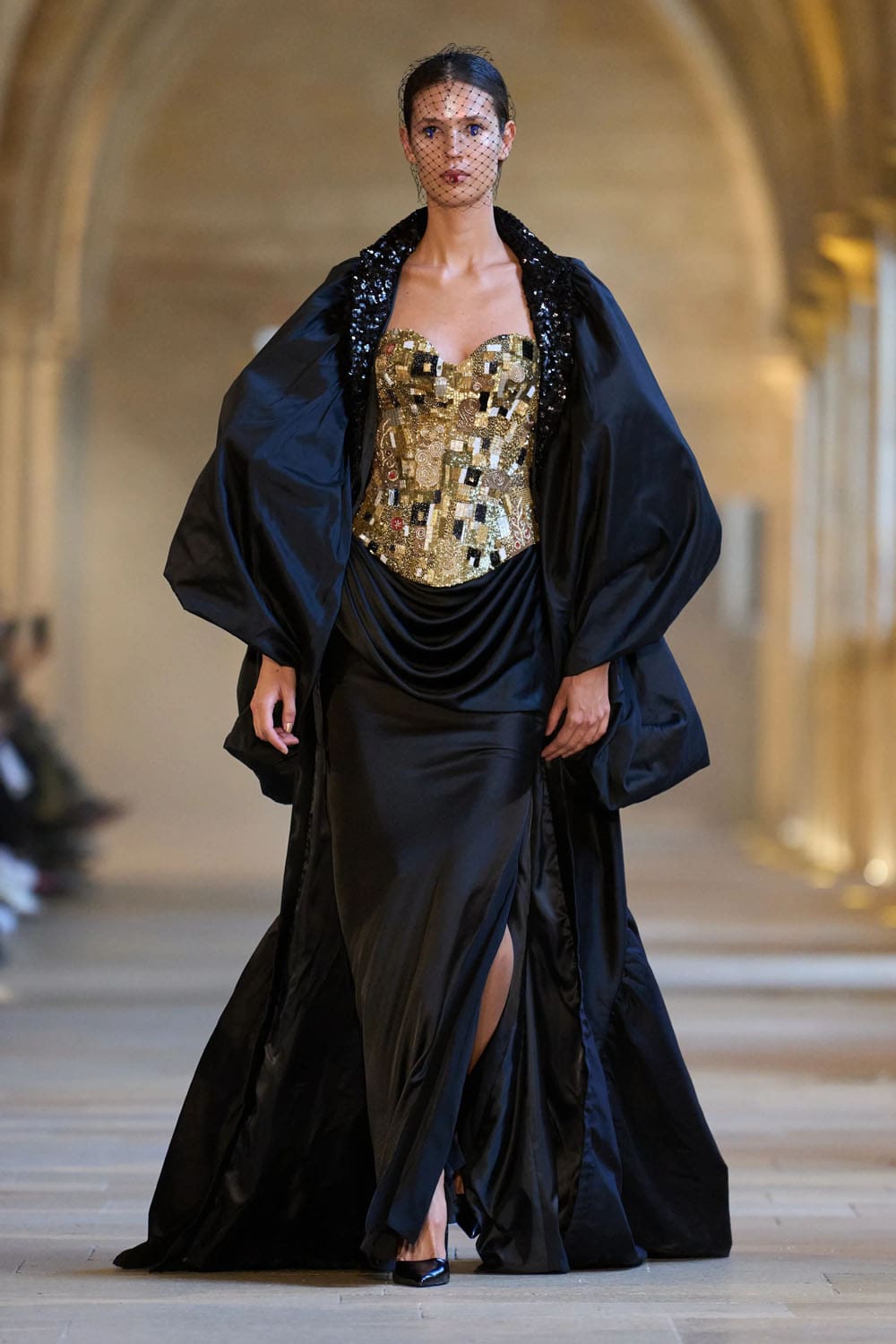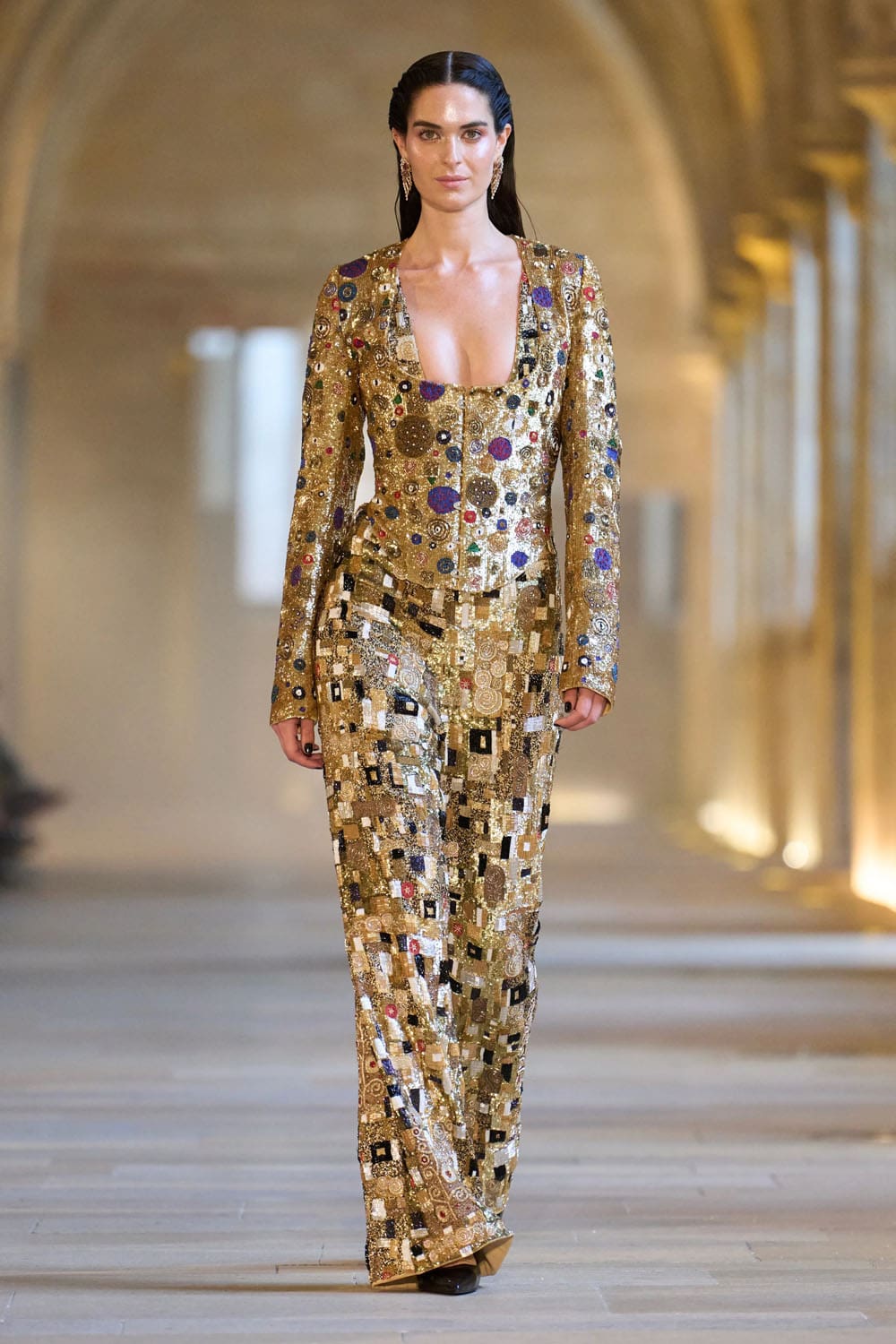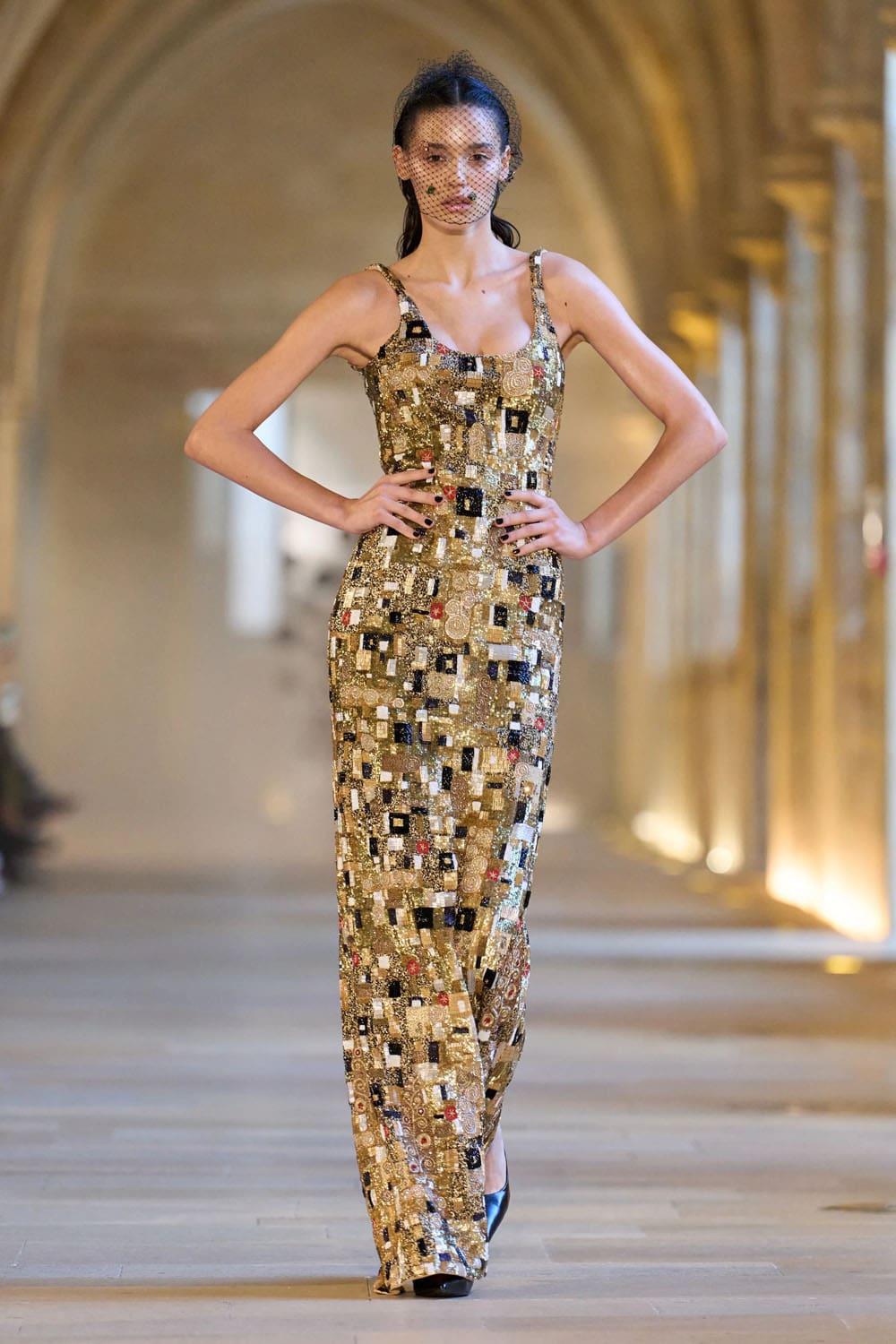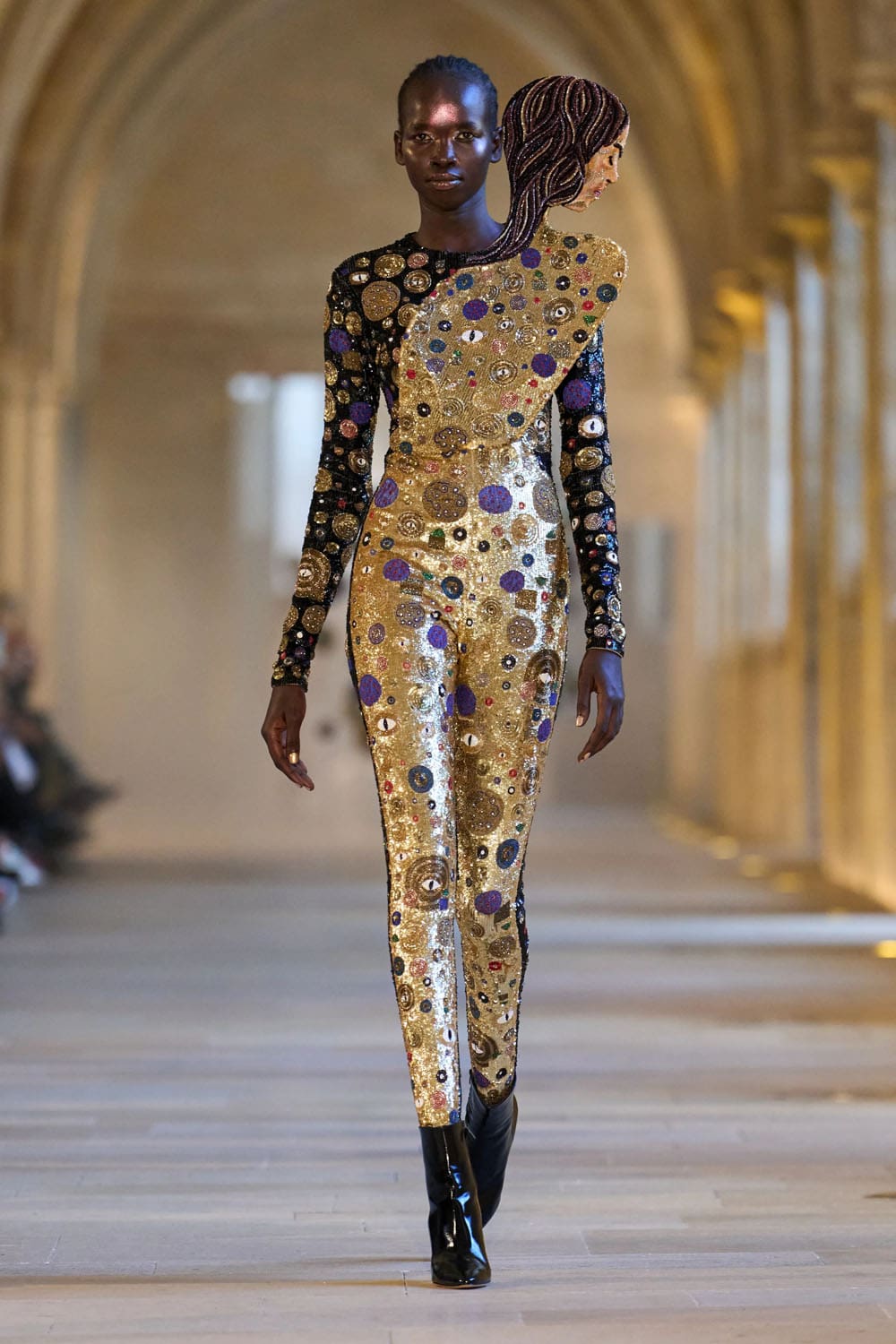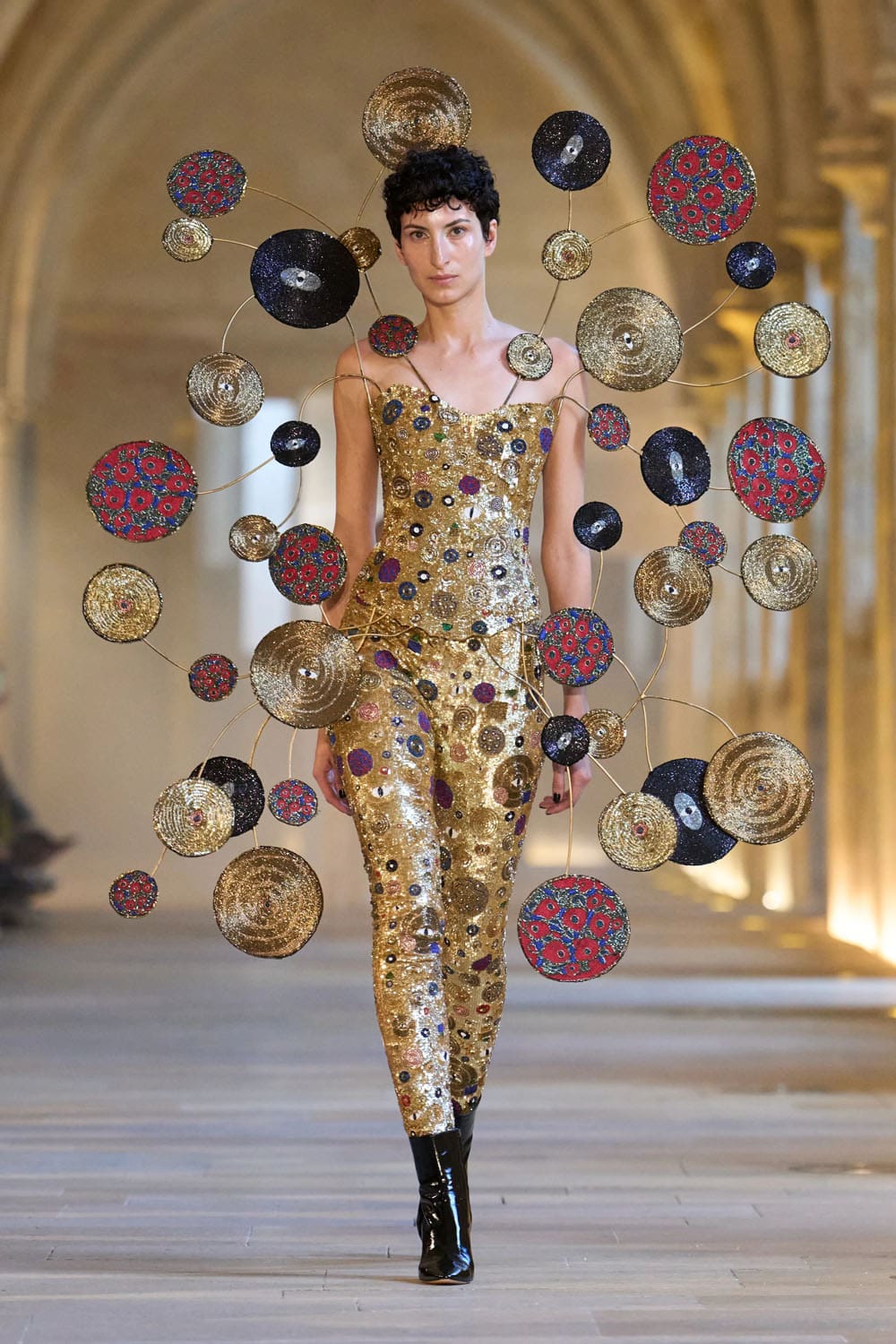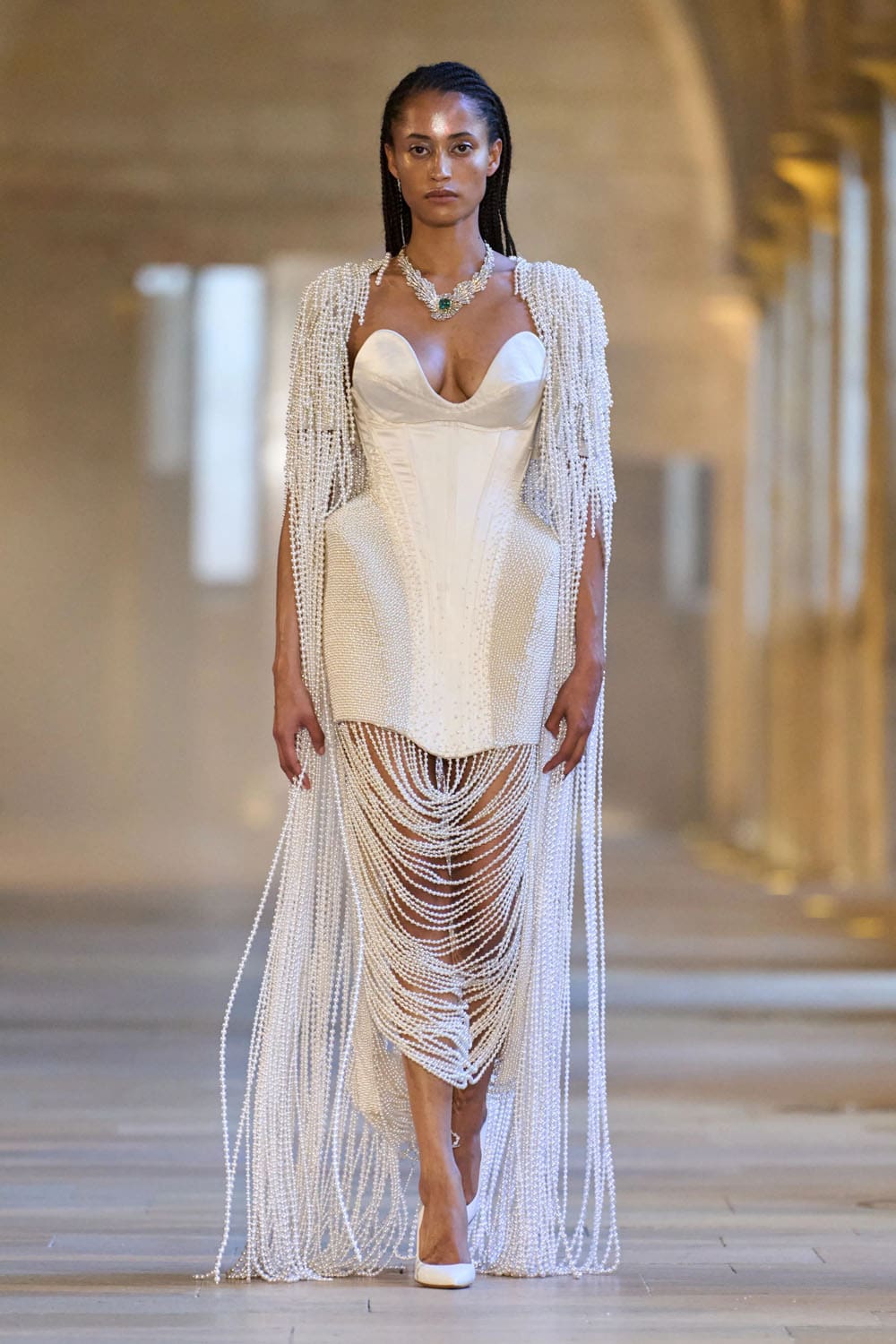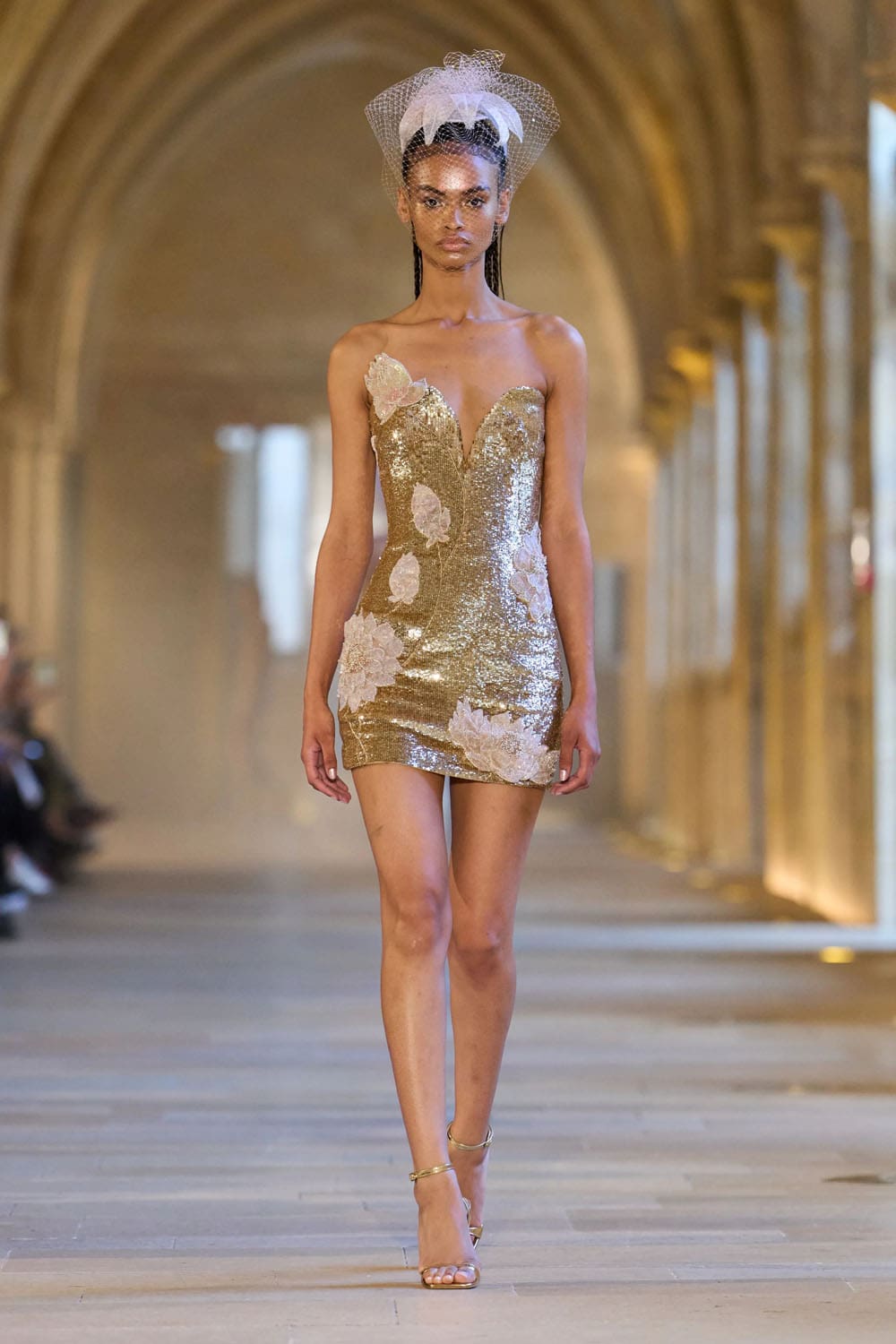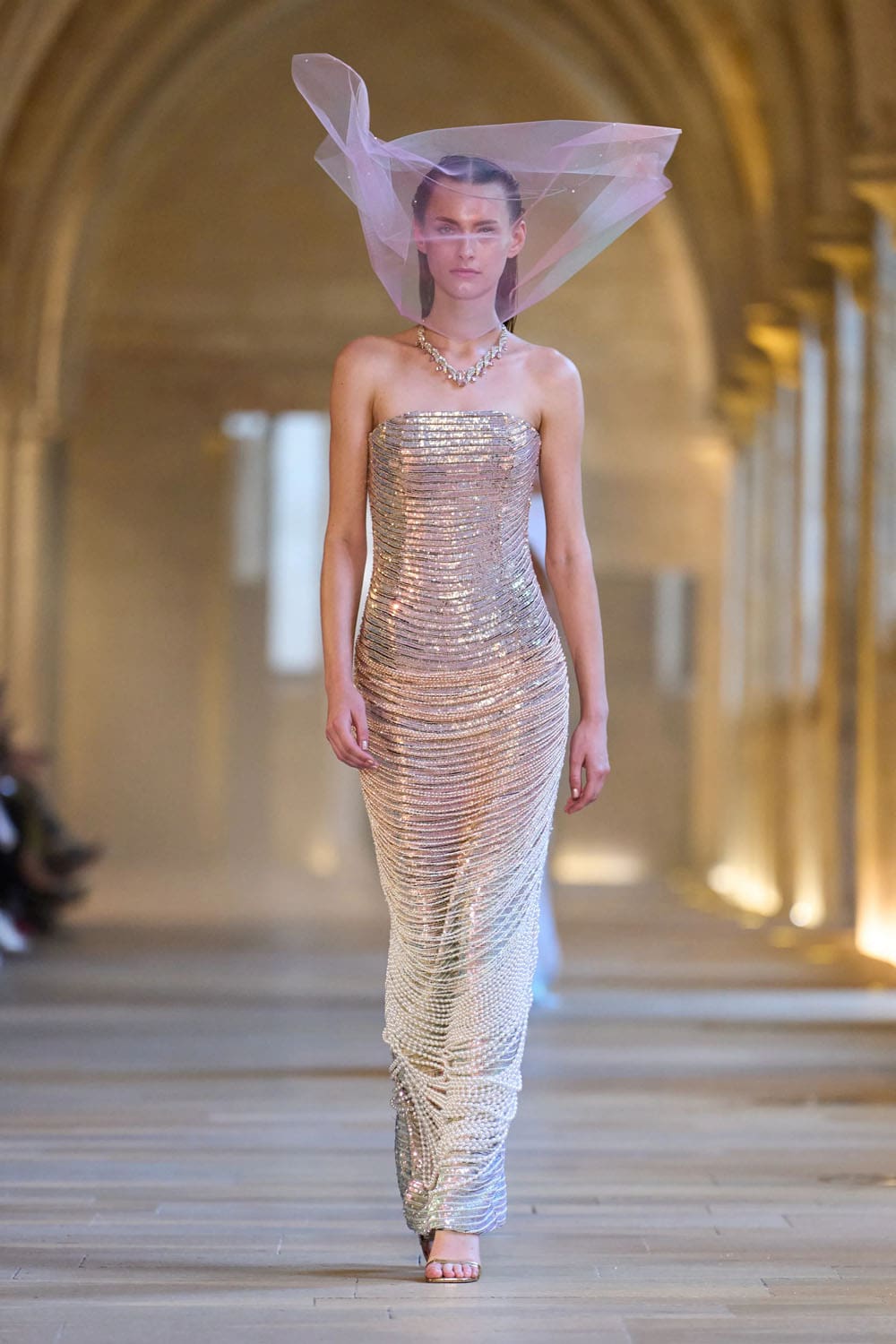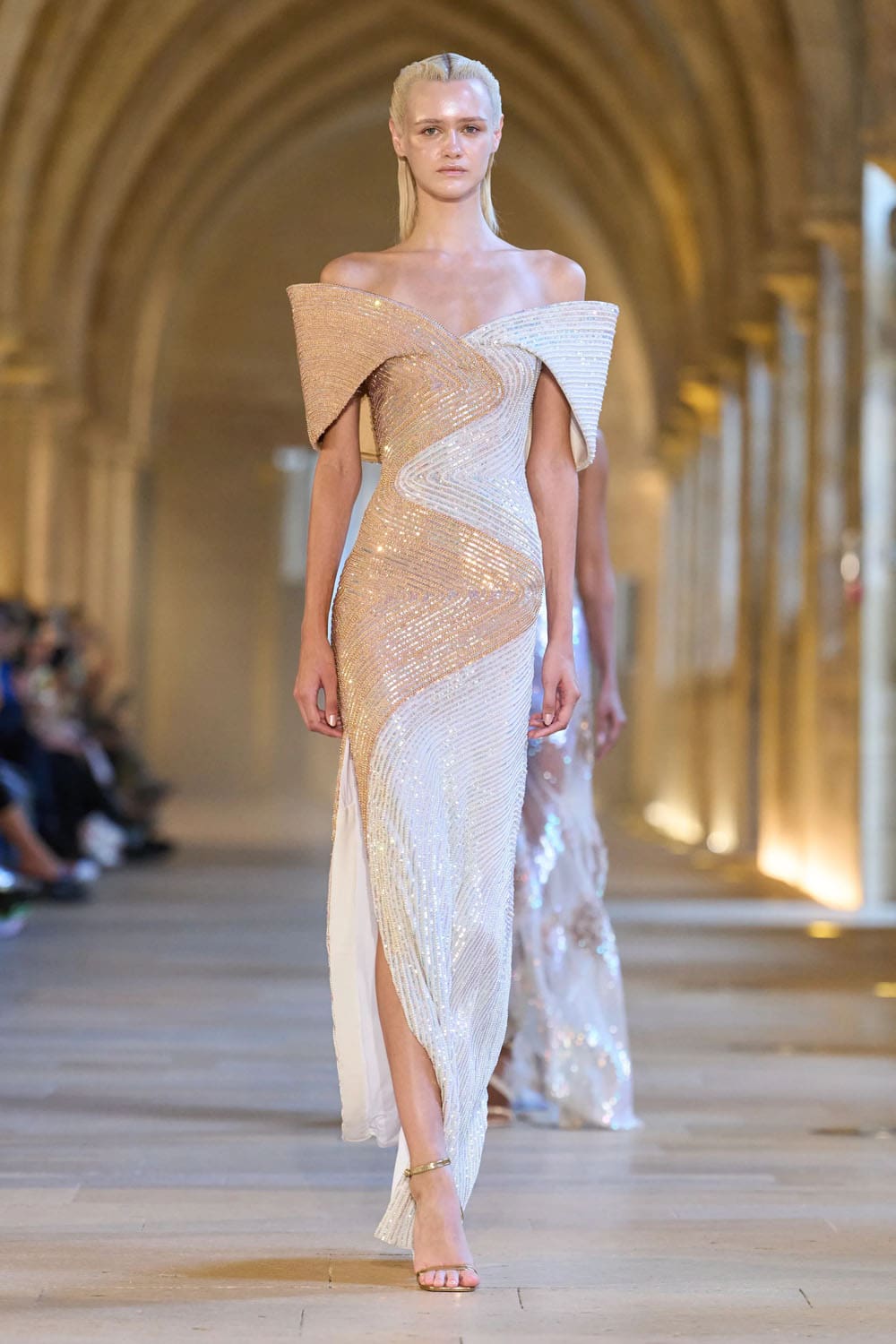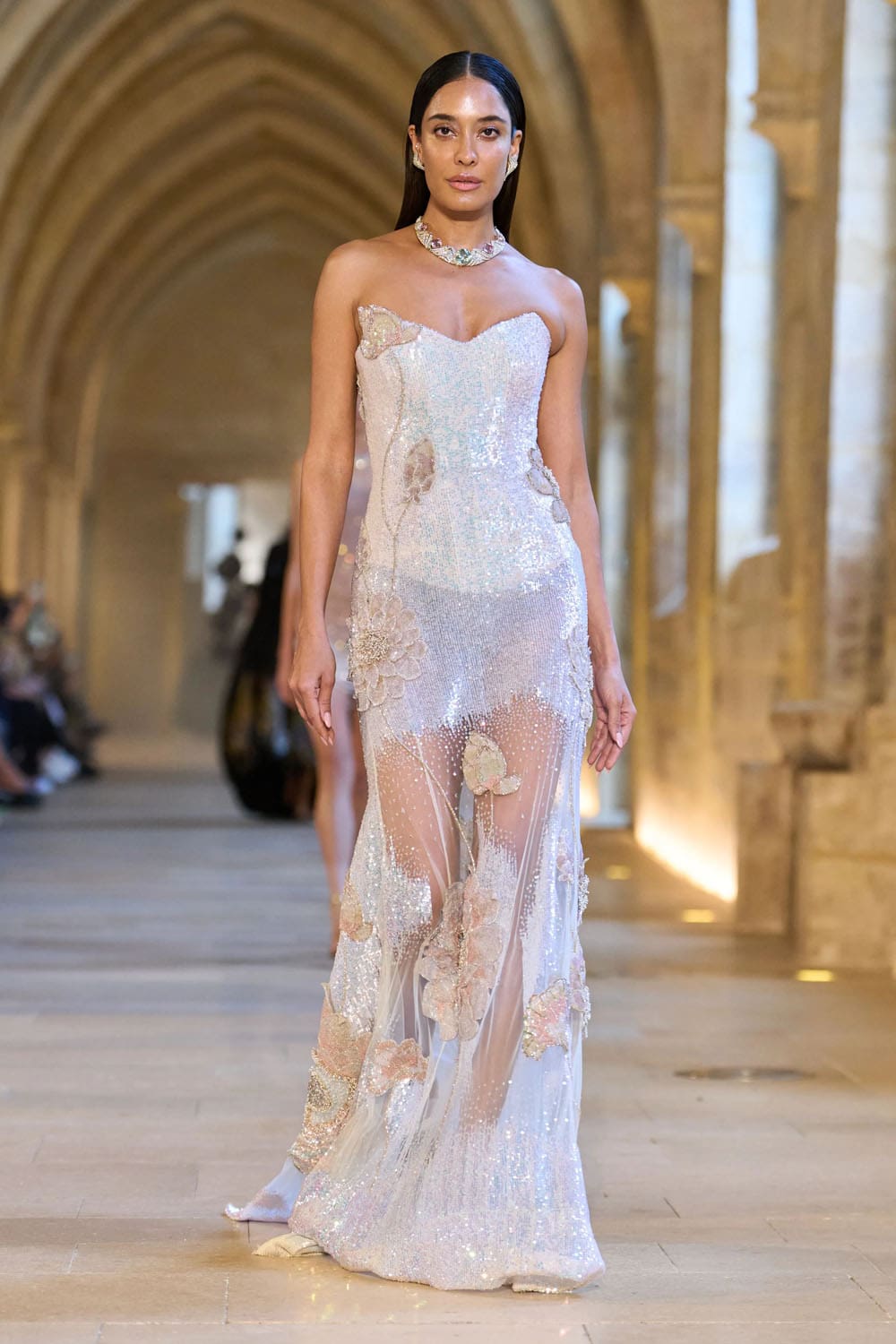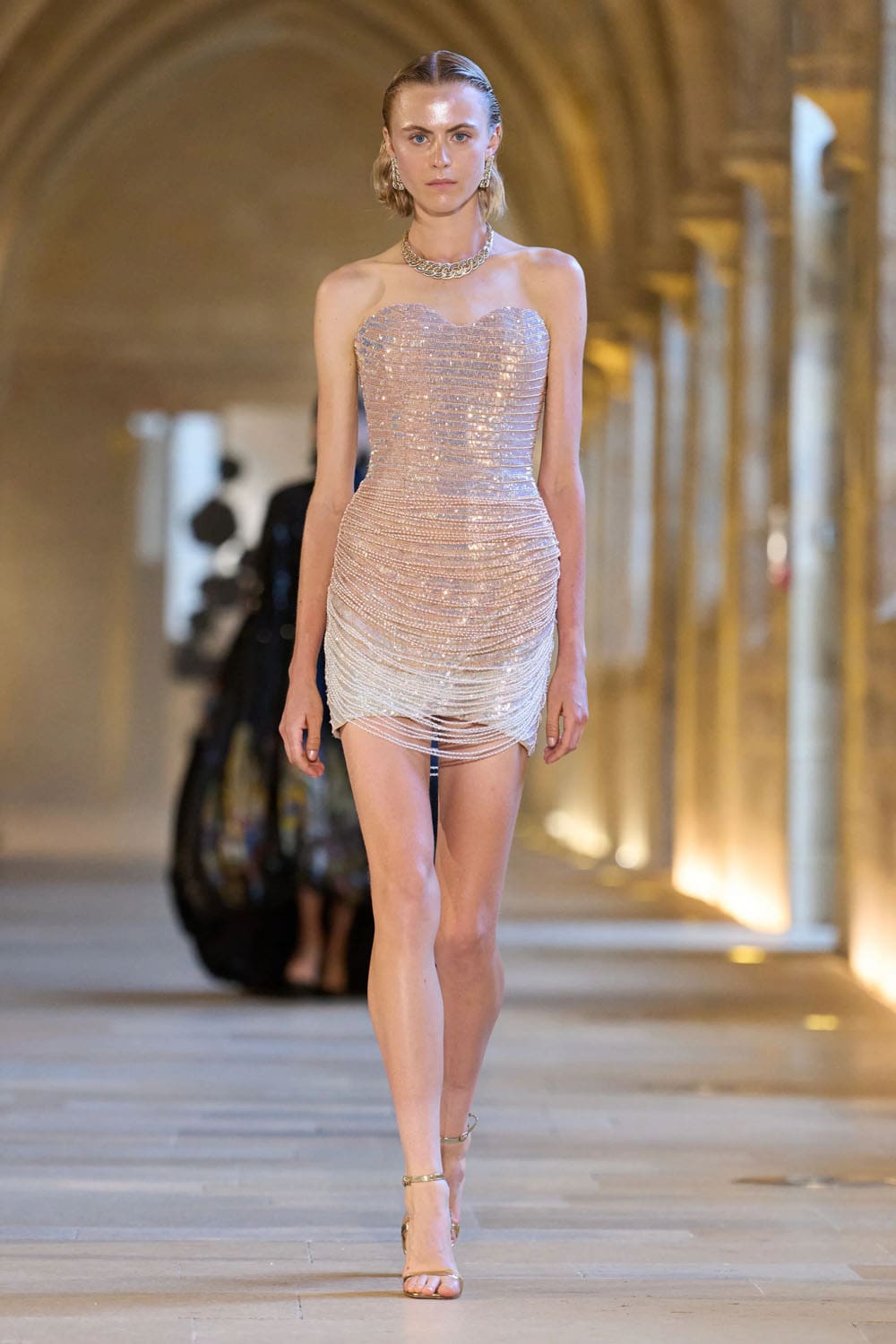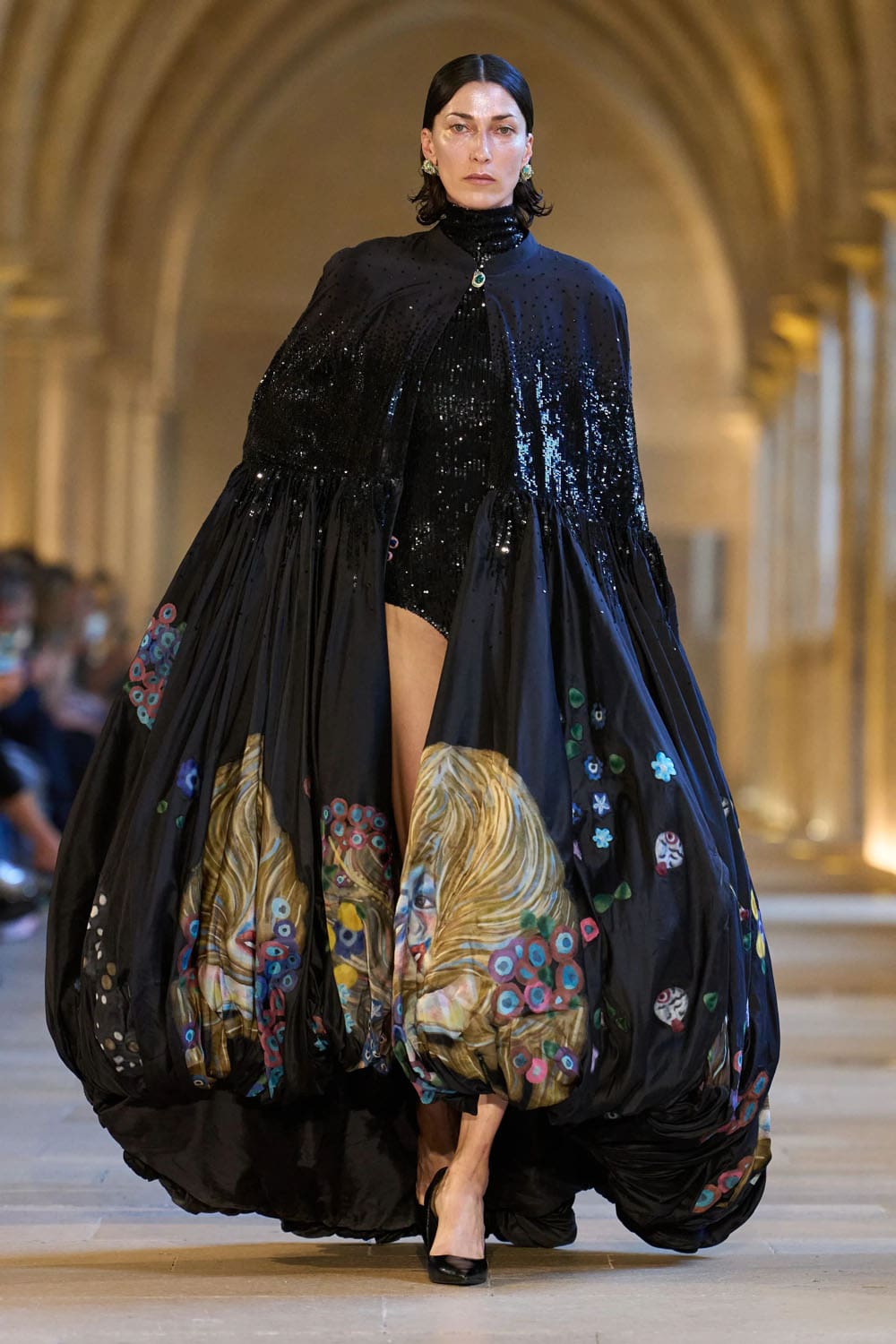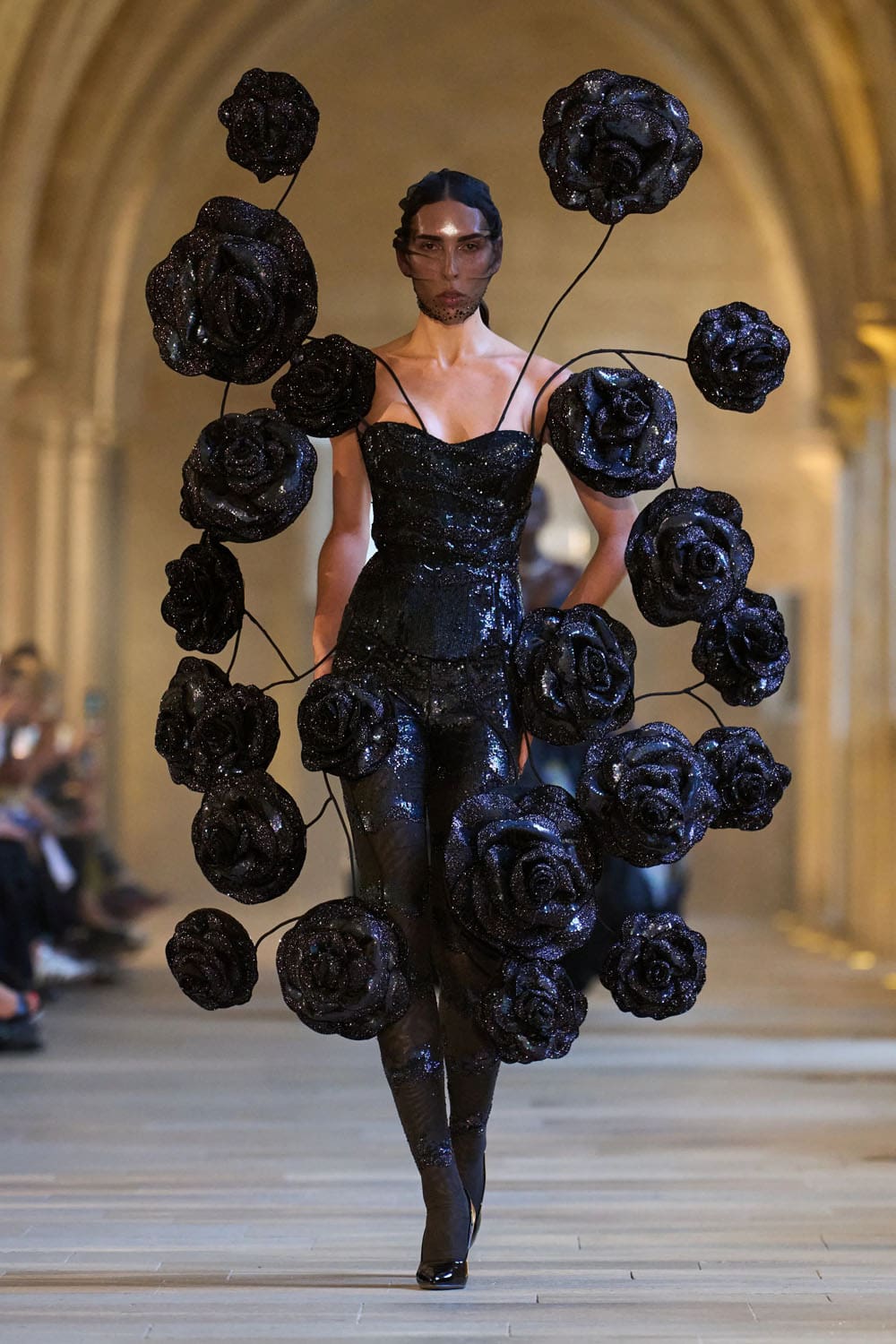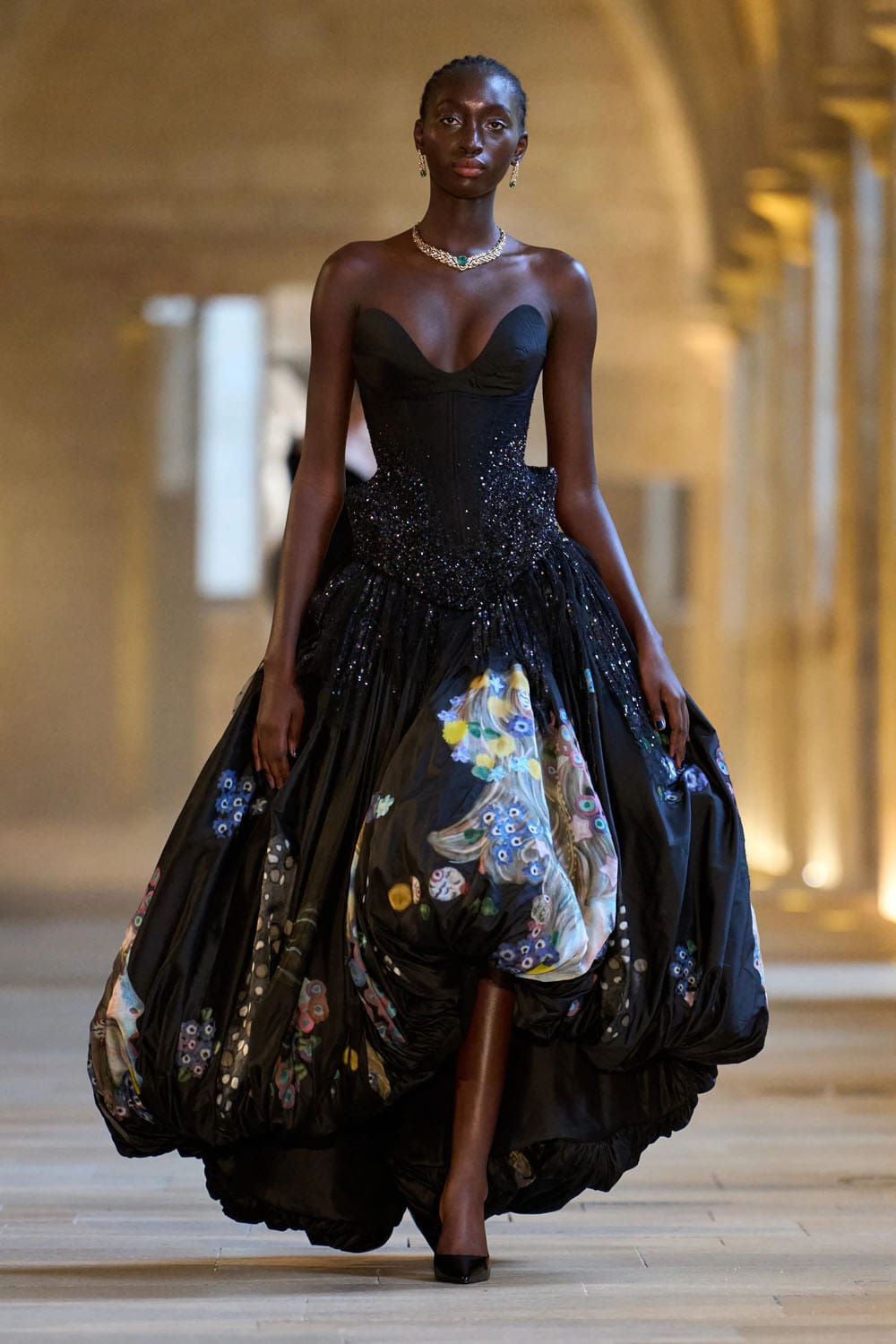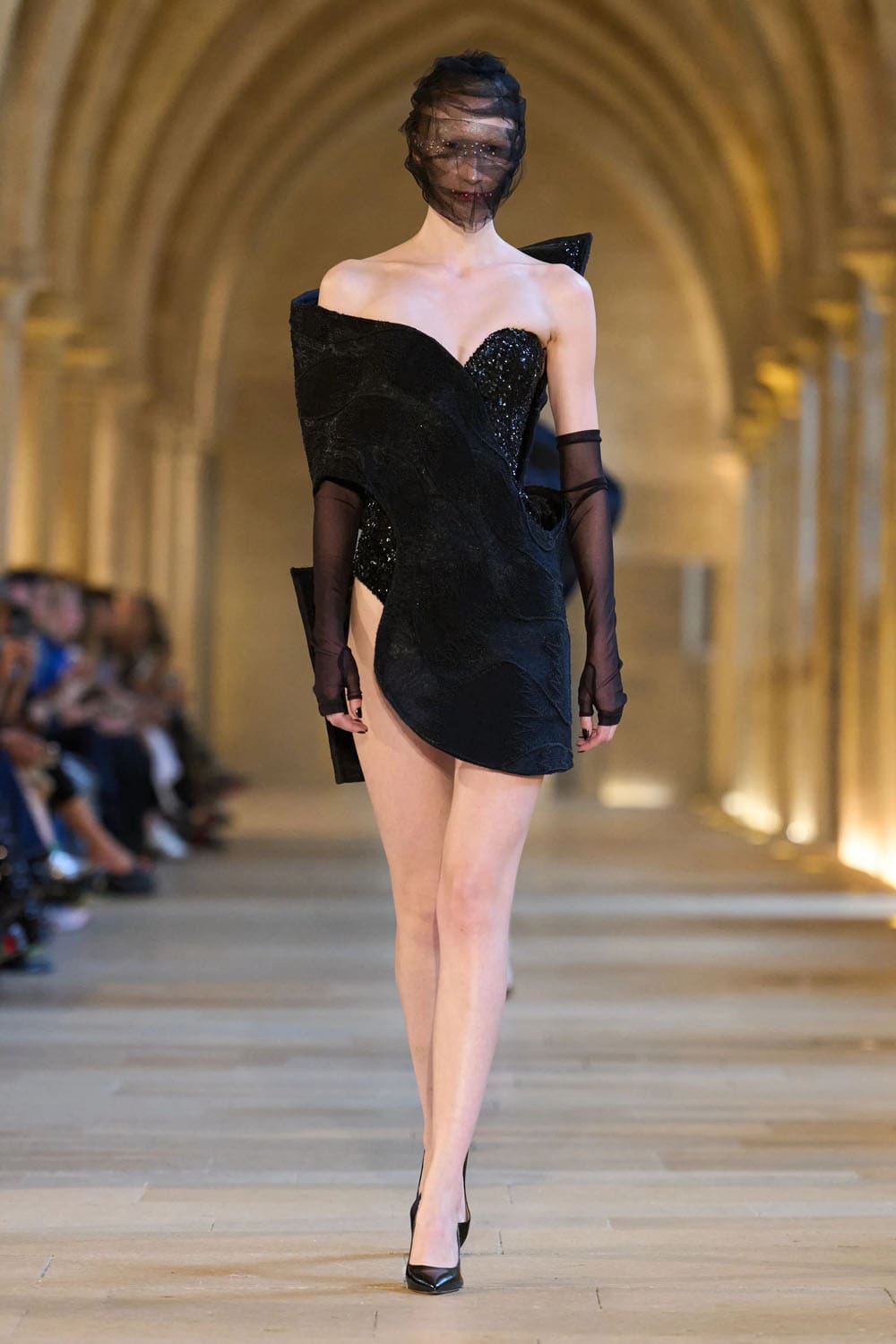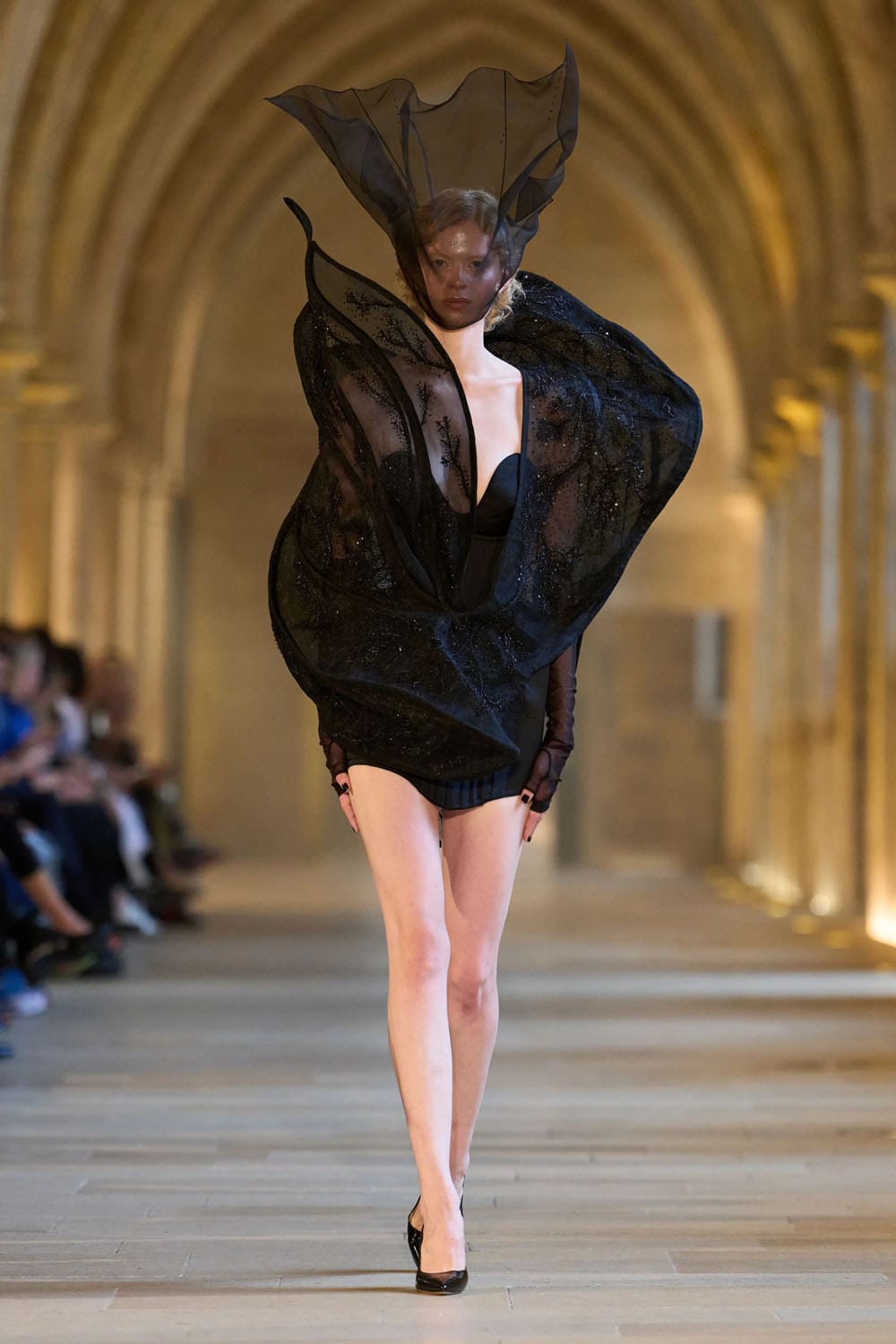Rahul Mishra Fall-Winter 2025–2026 Haute Couture “Becoming Love”. Story by Eleonora de Gray, Editor-in-Chief of RUNWAY MAGAZINE. Photo Courtesy: Rahul Mishra.
“Traversing the seven stages, we gather hue and form along the way, moving ultimately toward a profound stillness, where not even light intrudes. Sufism articulates the evolution of love through seven stages: attraction, infatuation, surrender, reverence, devotion, obsession, and finally, death.”
Rahul Mishra has long hovered in the realm of couture with his signature blend of intricate embroidery and philosophical allegory. But until now, that ambition often risked collapsing under the weight of its own ornamentation. This season, however, he delivered something rare: not just visual drama, but intellectual precision. A complete collection, composed with intent, discipline, and a deeper understanding of form.
Inspired by a Sufi verse that maps the seven stages of love—attraction, infatuation, surrender, reverence, devotion, obsession, and death—Mishra approached the theme not as a metaphorical exercise but as an architectural blueprint. Each stage became a garment, built meticulously by hand, embroidered to near-illusion, and suspended between reality and reverie.
The opening look established the tone: a sheer silhouette encased in heart-shaped gold embroidery—at once armor and offering. Elsewhere, a bodice dissolved into a cascade of translucent pearls, embodying surrender with deliberate fragility. These weren’t merely poetic flourishes; they were structural decisions that guided the eye without overwhelming it.
Several pieces made direct references to Gustav Klimt, though not in the predictable, decorative sense. Instead of borrowing motifs, Mishra absorbed the essence of Klimt’s compositions—the flattened perspective, the ornate containment of form—and transposed it into couture. Curved netting, gilded thread, and halo-like constructions evoked Klimt’s portraits not as imitation but as reinterpretation. The embroidery was not decorative; it was narrative.
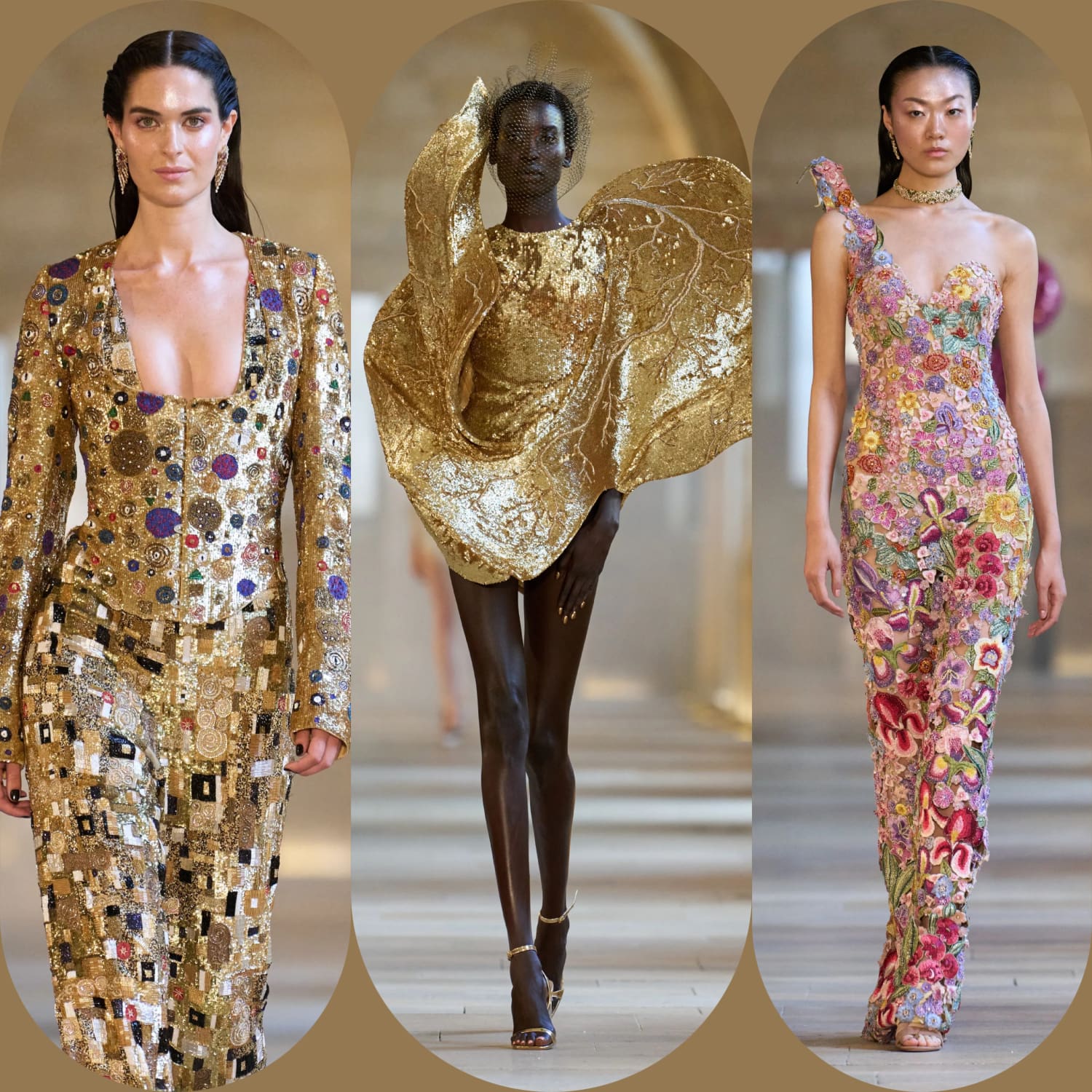
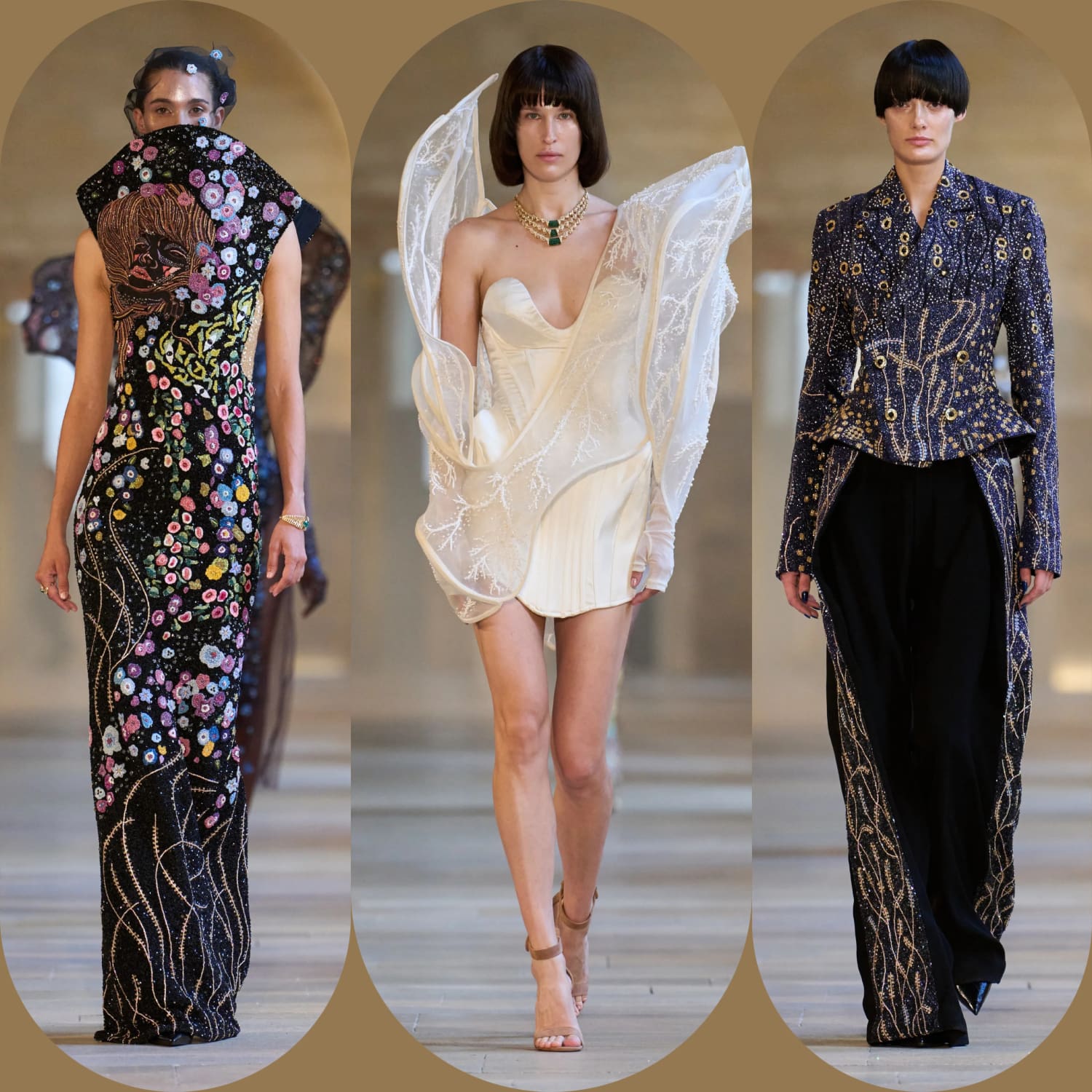
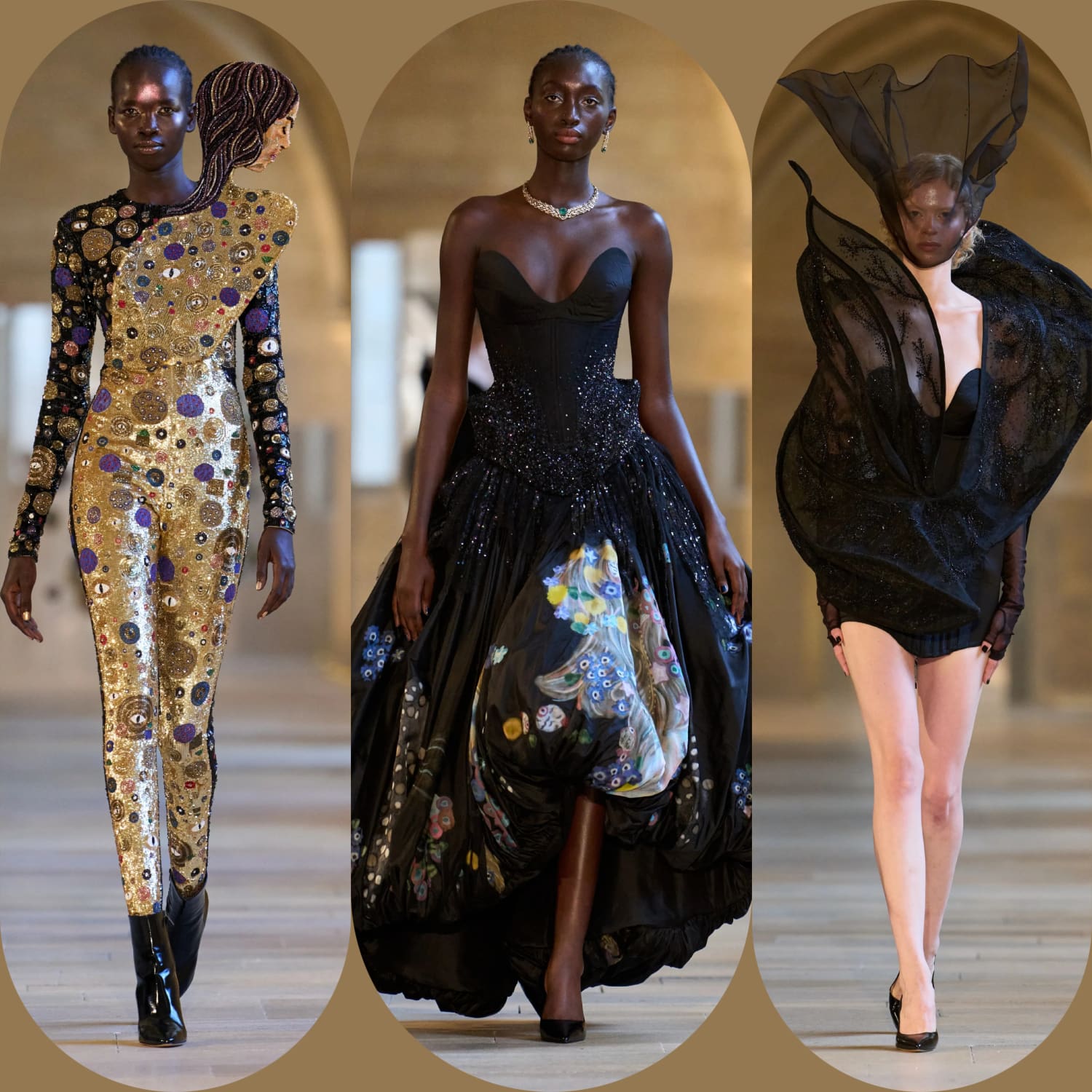
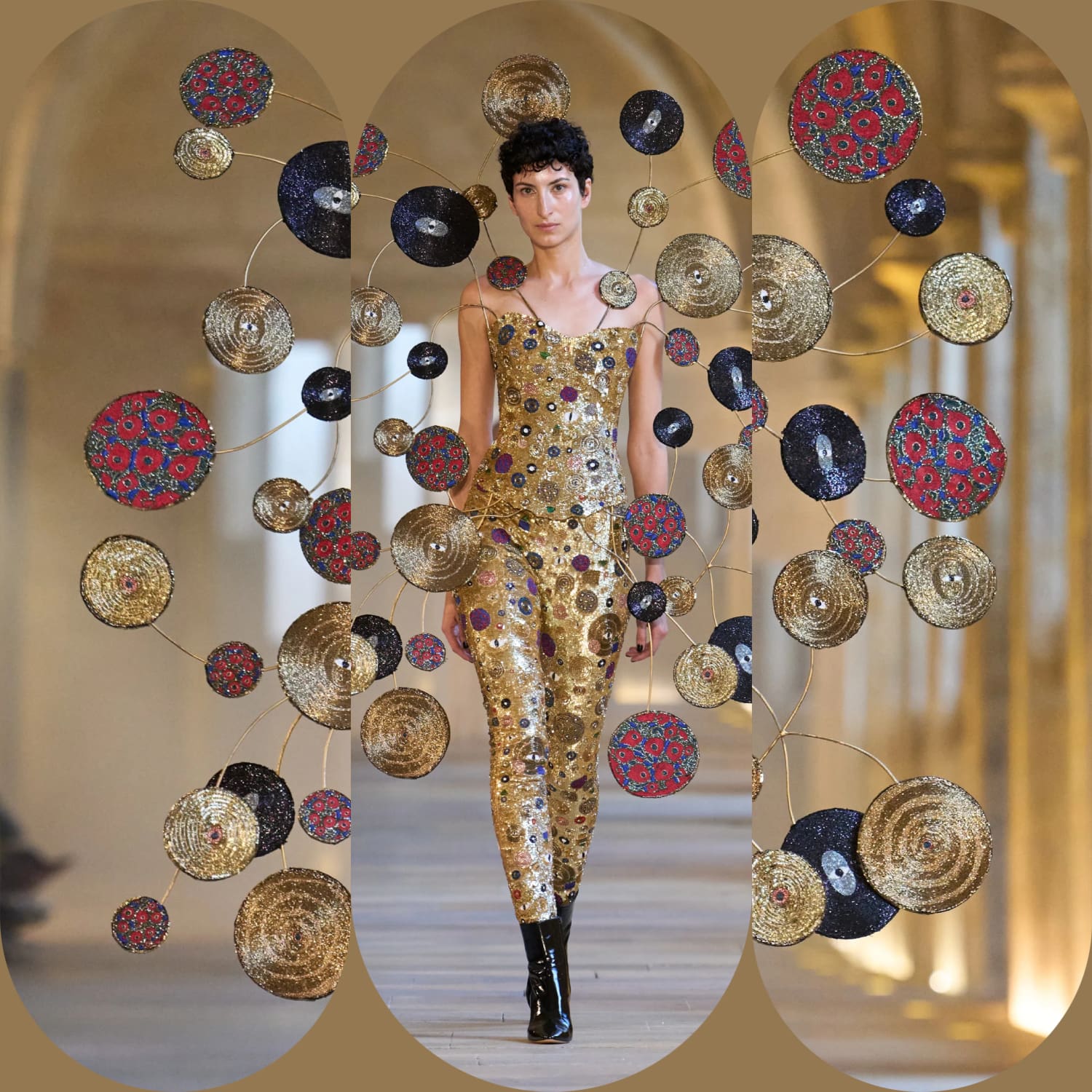
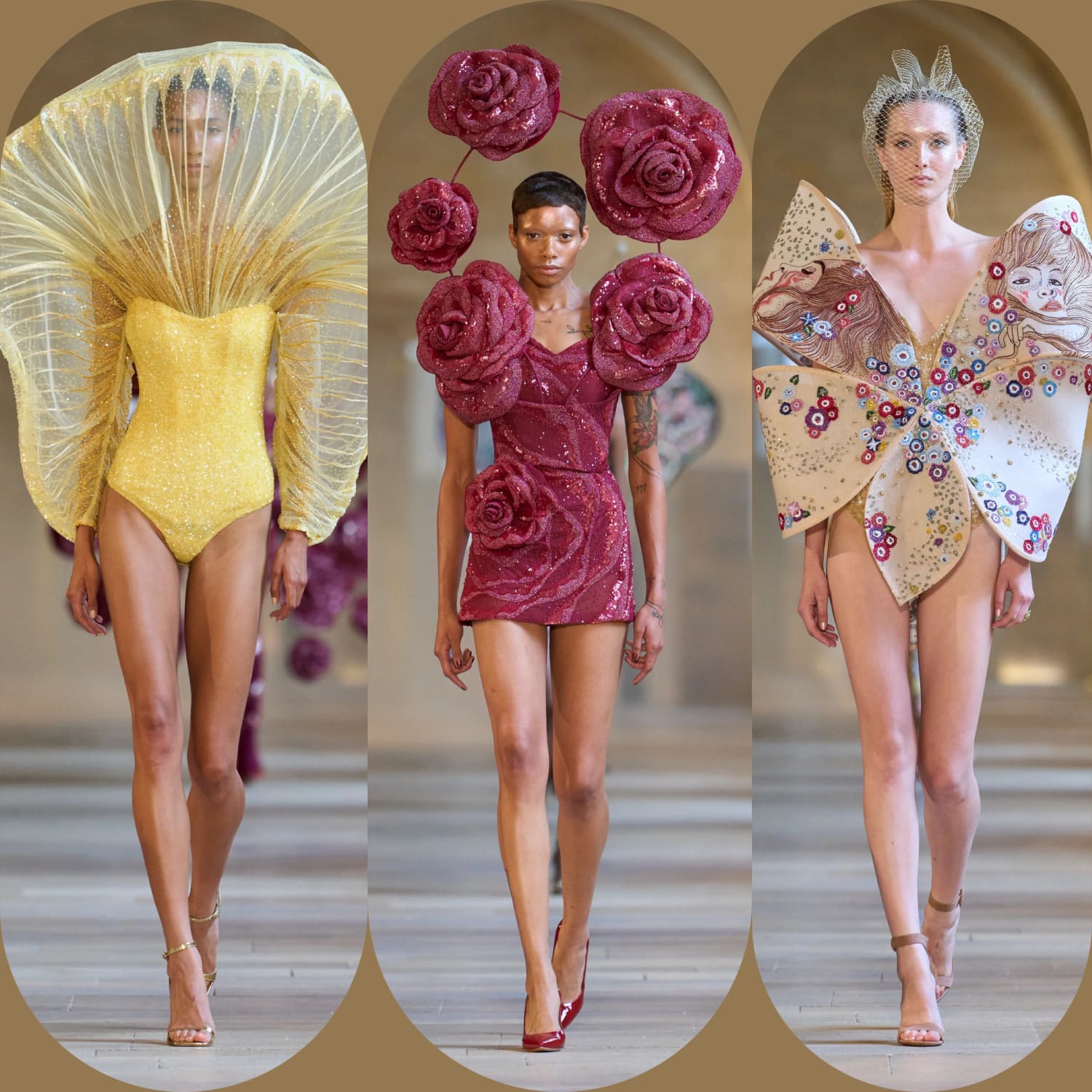
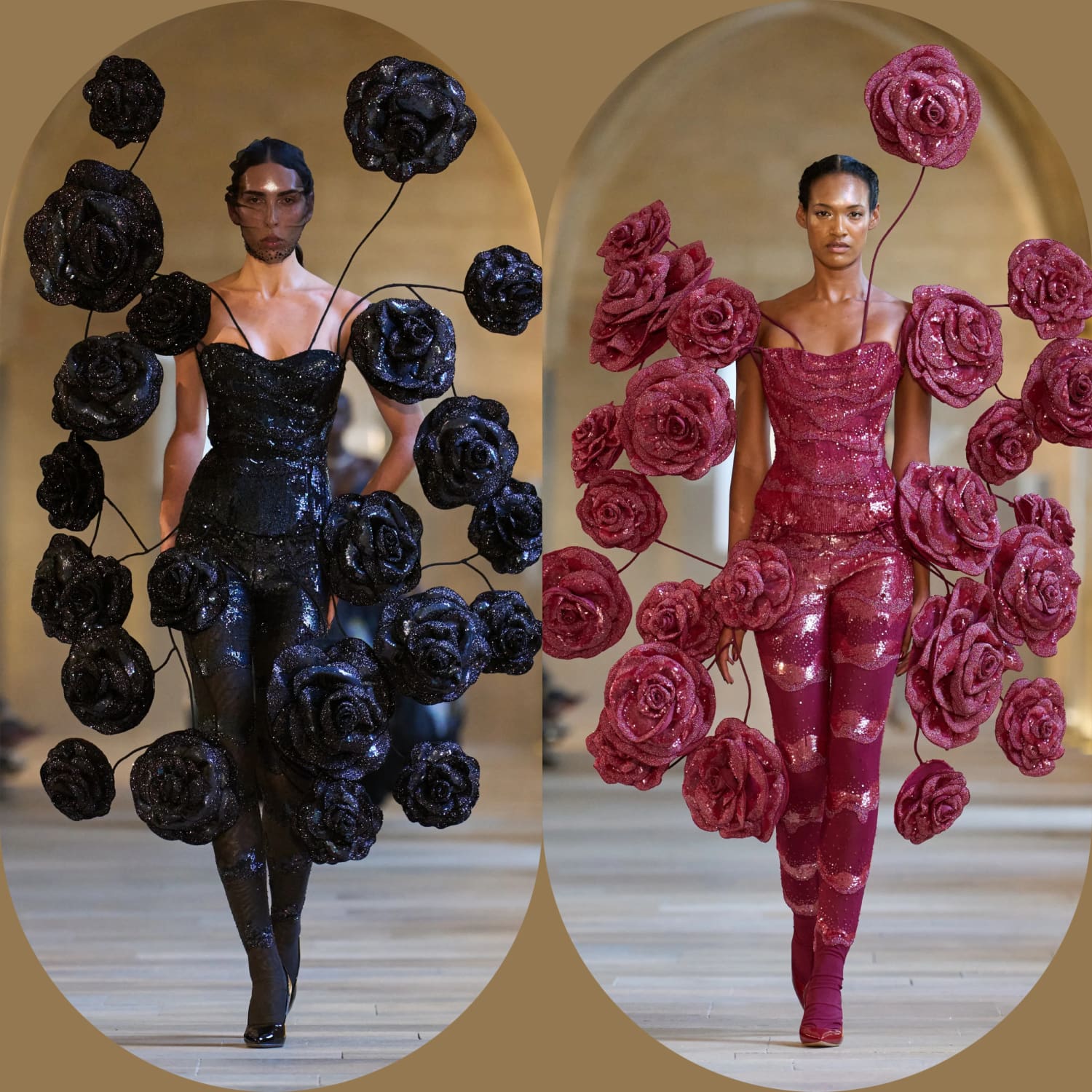
Then came the botanical constructions—roses bursting forth from the body of gowns, not tacked on but integrated as anatomical extensions. Fabric and flora fused into something operatic, yet never out of control. One dress embroidered to resemble a lotus pond shimmered with a quiet austerity: a study in restraint from a designer not typically known for it.
This is where Mishra’s work matured. For all its layers—mythological, spiritual, historical—this collection remained grounded in silhouette. The proportions were thoughtful. The sheerness served purpose. The embellishments did not suffocate the structure but revealed it. Complexity was no longer the end goal—it became the means.
References to Indian cosmology and Sufi mysticism ran beneath the surface, never shouted. The lotus, traditionally a symbol of rebirth and divine energy, was not just embroidered but understood. It was a conversation between faith and form, not a costume. And for once, Mishra seemed to trust the strength of his ideas enough to let the clothes breathe.
Haute couture, at its best, is not about novelty. It is about discipline—of thought, of technique, of intent. This season, Rahul Mishra demonstrated a new fluency in all three.
See All Looks Rahul Mishra Fall-Winter 2025–2026
